

























Category Archives: AO3 Record Ideas
Filters
Paper Photography
Photo 1

Photo 2

Photo 3

Photo 4

This is my favorite image from the shoot with the paper.
Technical:
Lighting – The photo was taken with flash the try and highlight the contrast between the white paper and black card.
Aperture – The aperture was F3 so a medium amount of light was being let into the camera.
Shutter Speed – Was around 1/15 of a second which gave the top photo in particular a slight blur. An improvement would be to maybe use a faster speed of 1/250 or use manual focus.
ISO – The ISO was around 800.
White Balance – The temperature and warmth was turned up when editing to give the paper a worn effect as if it had been left for some time and been used. The white balance was also turned up to help the paper stand out.
Visual:
The texture of this image has been greatly heightened to over exaggerate the crumples in the paper. I used the warmth tool to increase the worn look on the paper to make it look like it had been used or is old.
Conceptual:
The idea behind this work and image was to capture a raw and simplistic picture that can still be powerful and emphasize how such common items such as a crumpled piece of paper can be captured in unique and diverse ways, showing how photography can create a virtual presence of something so plain.
Experimenting with Paper
Martin Creed

Martin Creed (born 1968) is a British artist and musician. He won the Turner Prize in 2001 for exhibitions during the preceding year, with the jury praising his audacity for exhibiting a single installation, Work No. 227: The lights going on and off, in the Turner Prize show. Creed lives and works in London.
For this experimentation with Paper I focused on the artist Martin Creed. Creed is looking at a sense of possibility. He is experimenting with the shape of the ball and also into the creases that can be made onto the paper as shadows and lines.
My aim was to use Martin Creed as inspiration to produce my own set of photographs from and experimental photoshoot. This included experimenting with the different positions of the paper and where in frame it sat but also what effects I could create with the creases in the paper and also different paper textures such as plain white paper and also tracing paper.

I have done experiments with the angles I have taken of the paper and how I have positioned the different sheets to form one image to create different compositions. I have tried to experiment with the different traps of light between the creases of the paper to create different tones in the final photographs.
I often used the flash when creating my photographs, I did this to experiment with the amount of light I could hold and experiment with to see different outcomes of tone and exposure as I photographed the paper.
Final Chosen Photograph

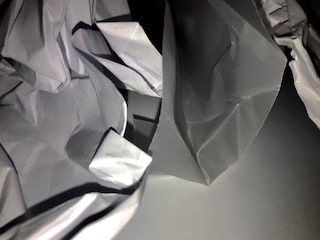
Contact Sheet

The meaning of each colour is:
Red: Indicates a photo or area I dislike. I would either discard the photo or crop the red areas to enhance the focal points of each frame.
Green: Indicates a composition that I am pleased with and would go on to edit to further improve the image.
Blue: Shows an area where there is an area of overexposure in the frame.
Pink: Shows an area that is out of focus where this was not my aim.
Abstract Photography Task

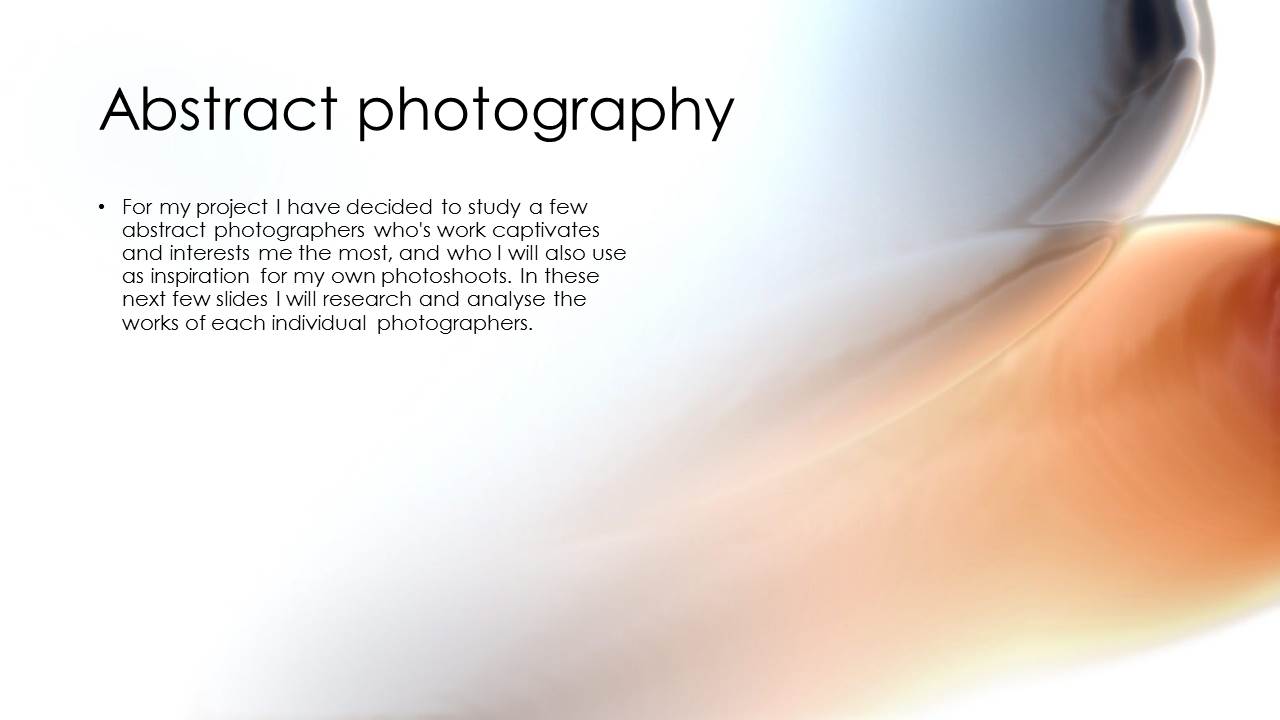
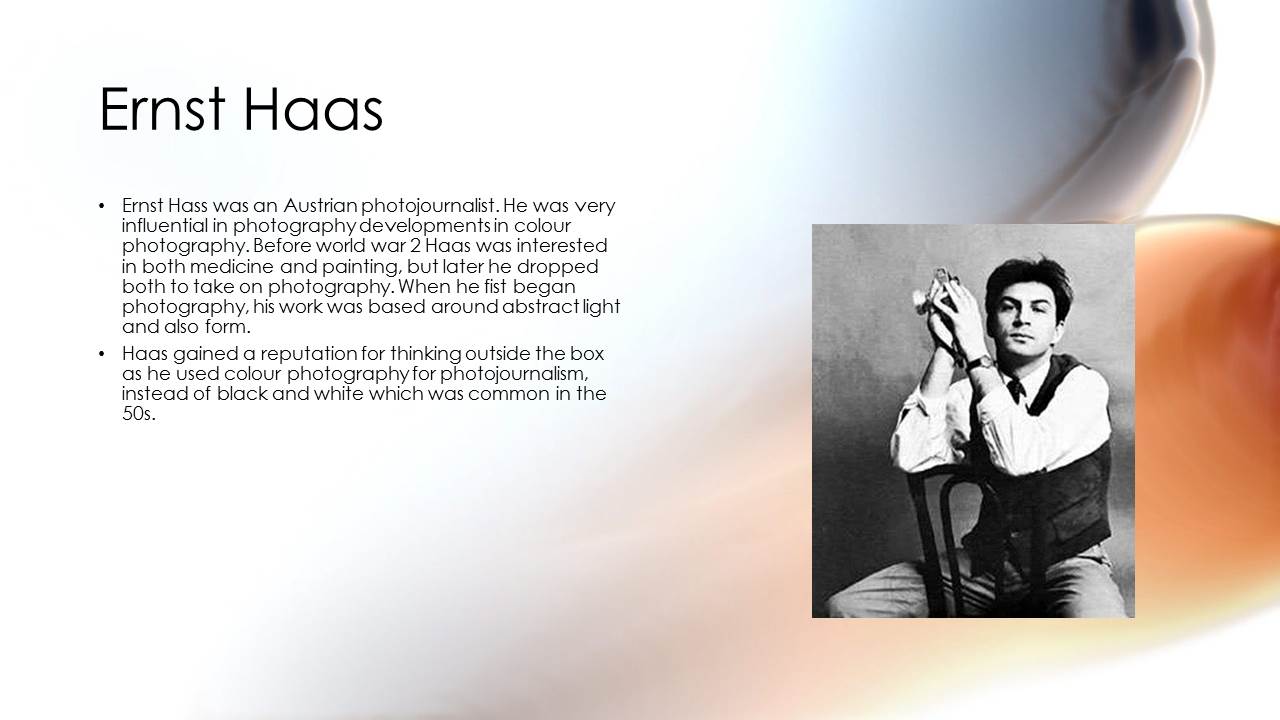

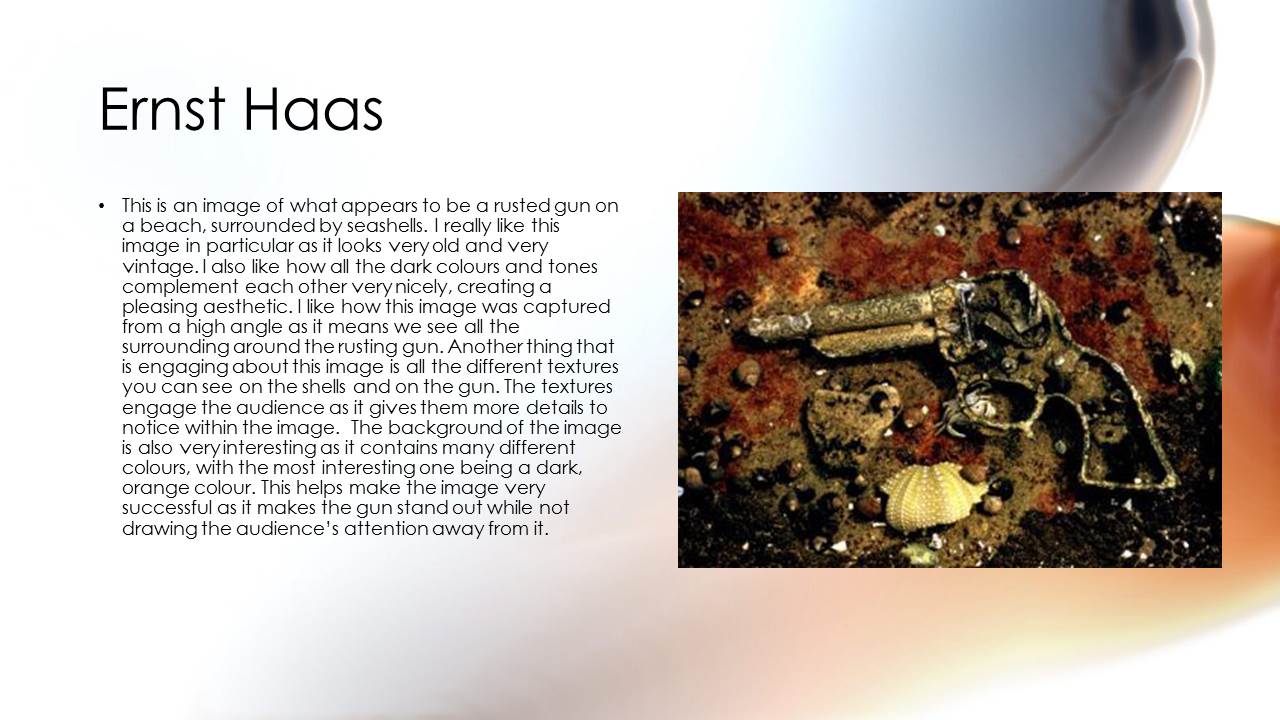
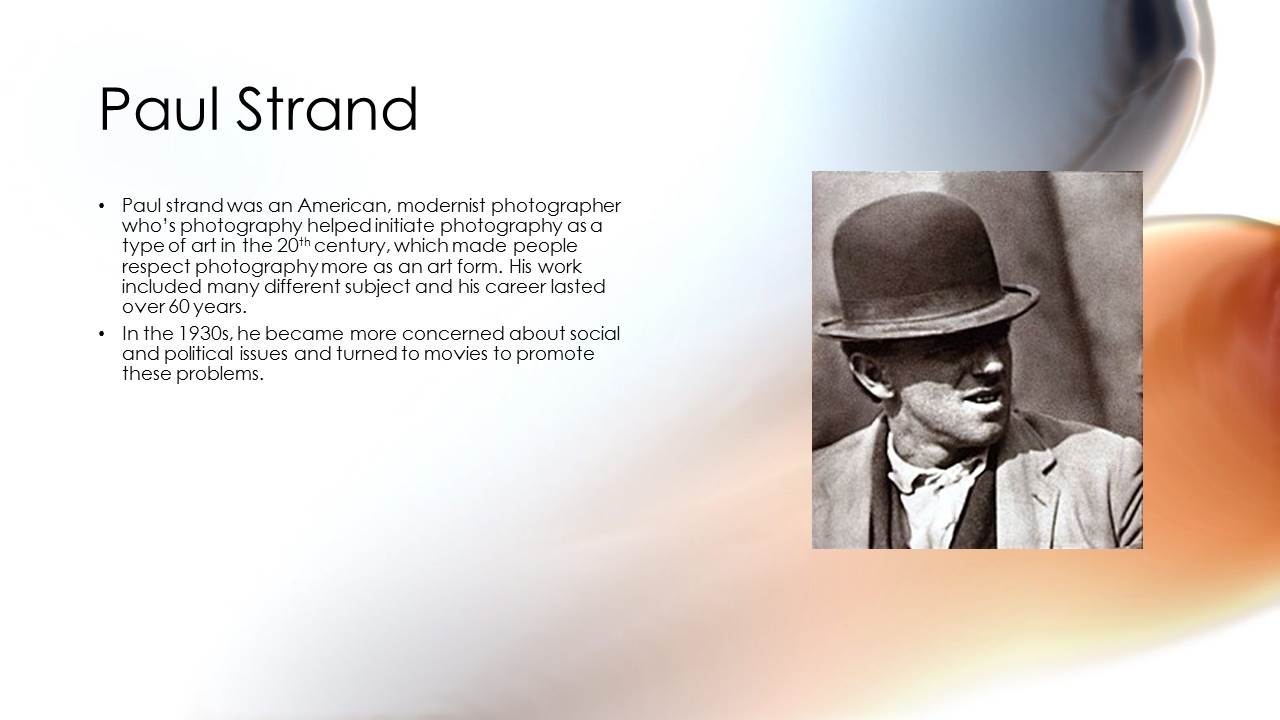
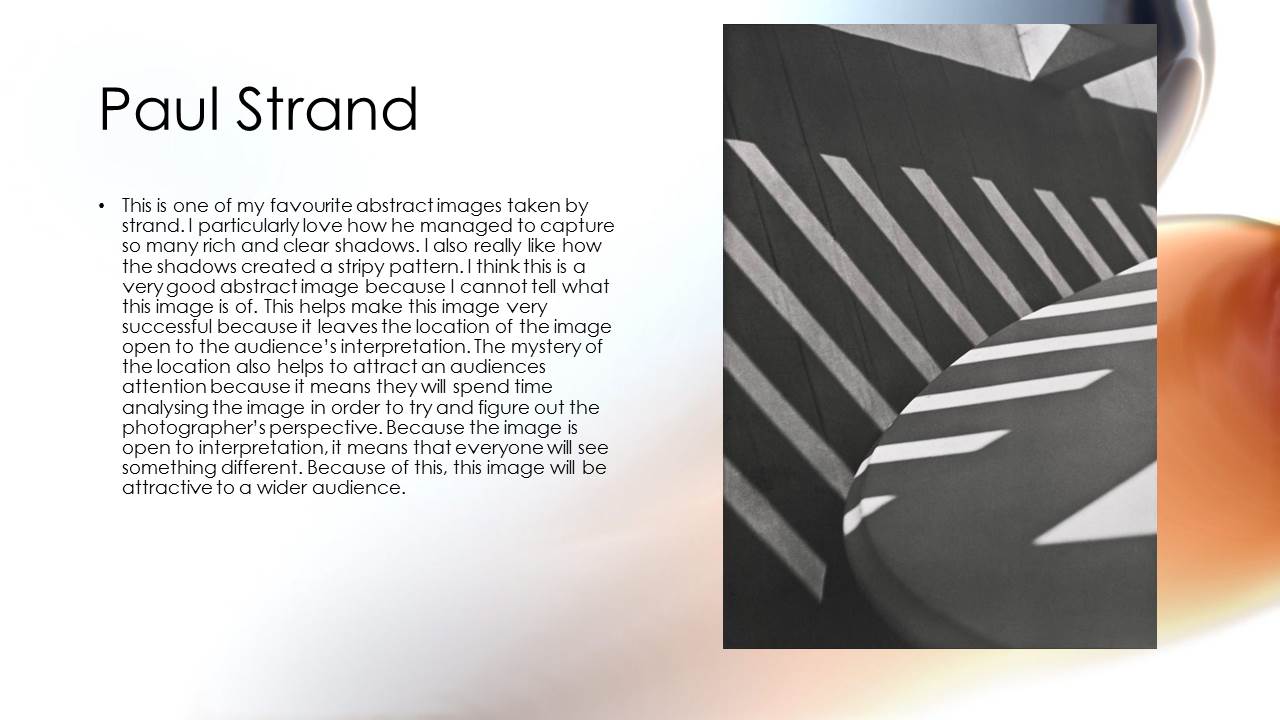

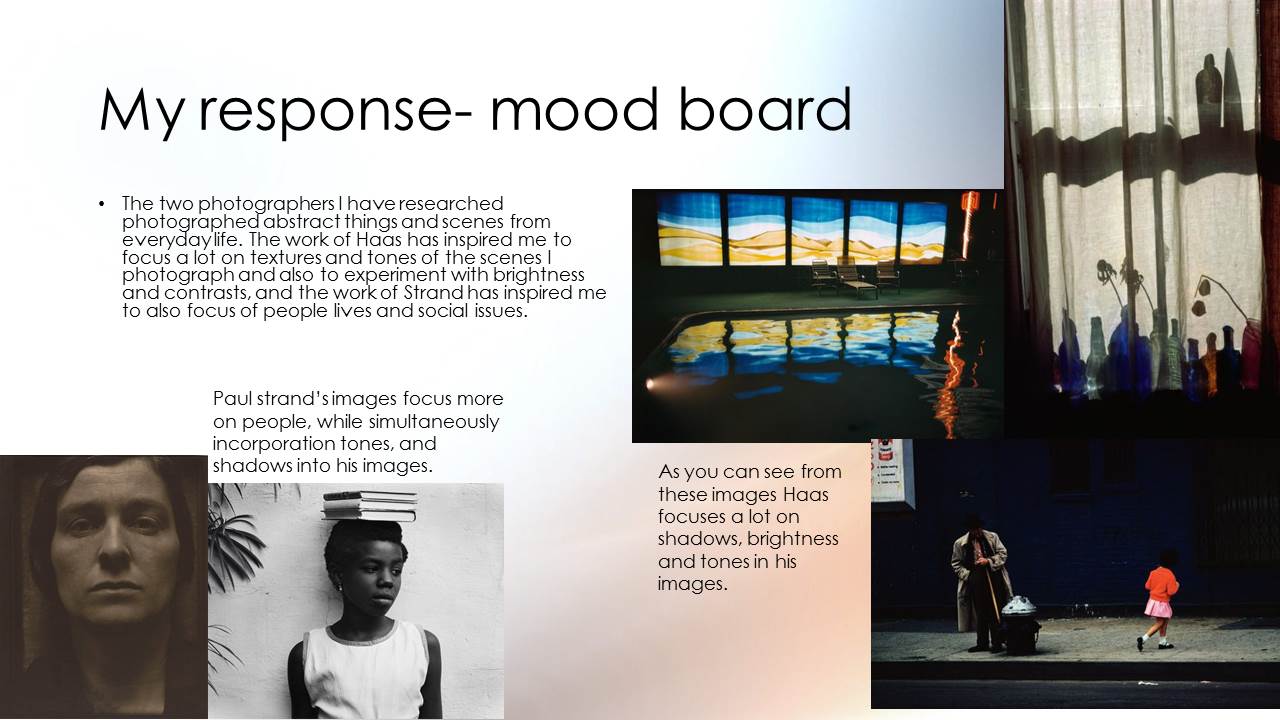


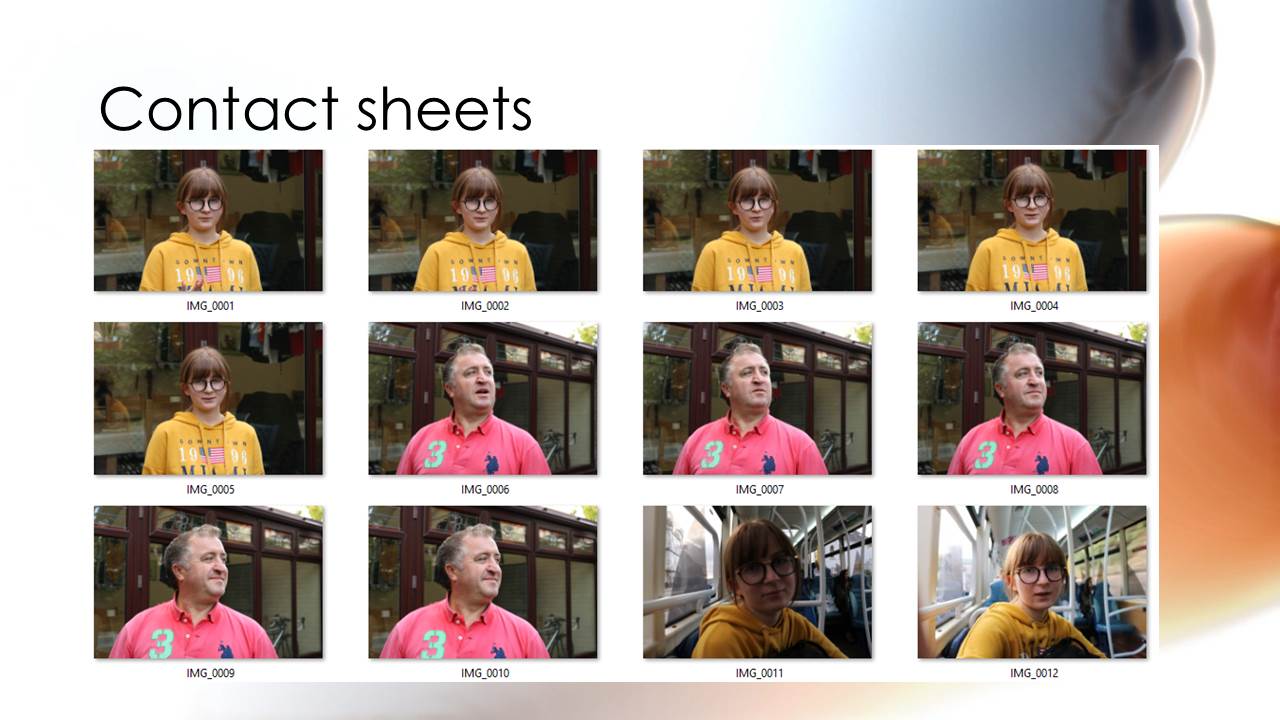

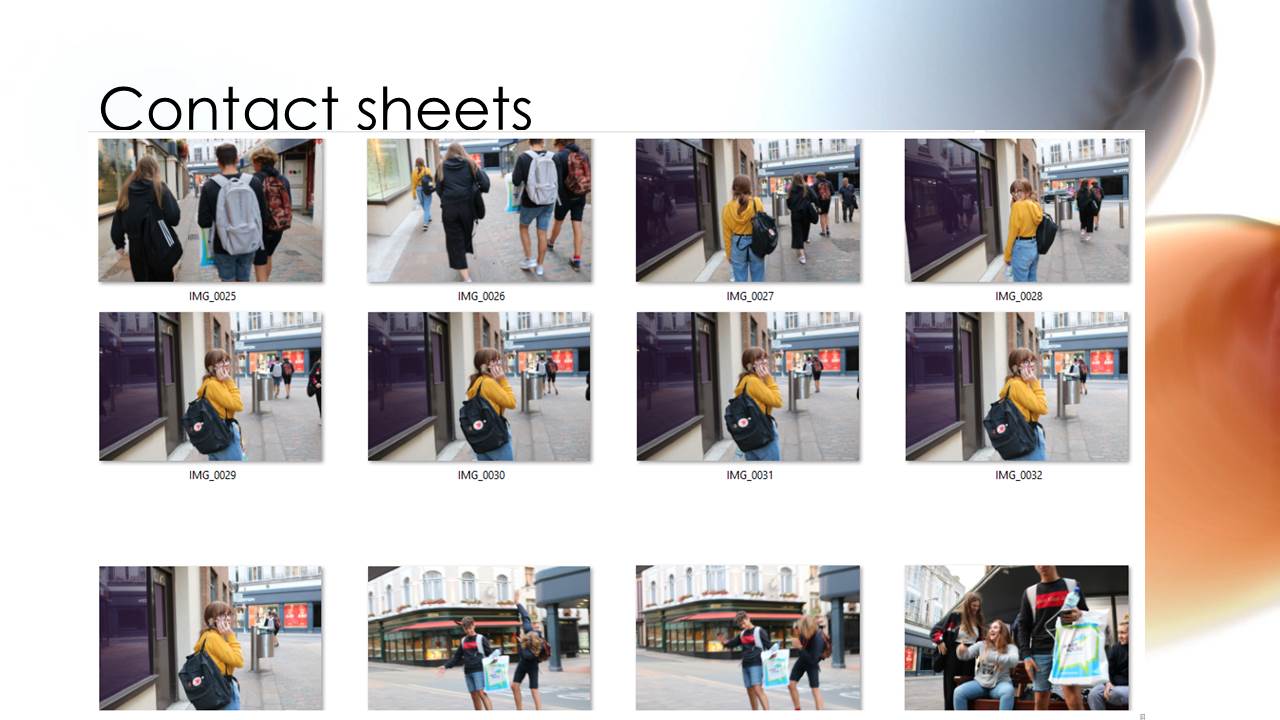
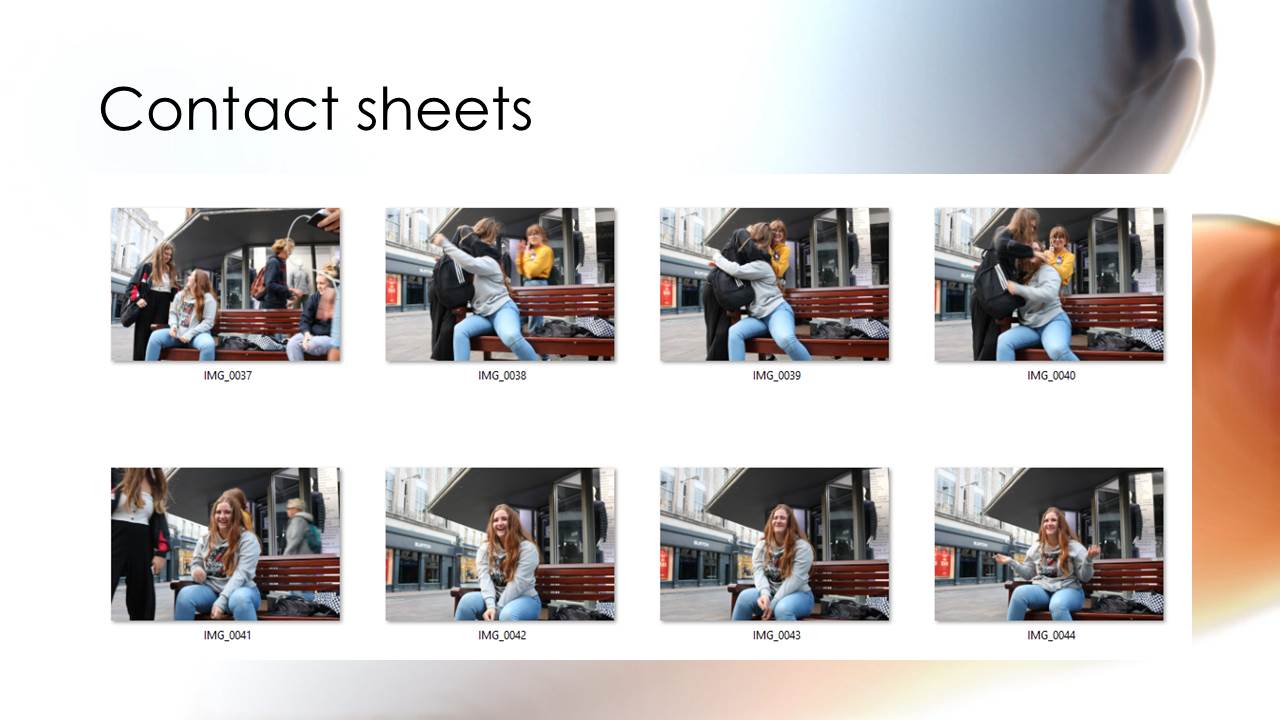

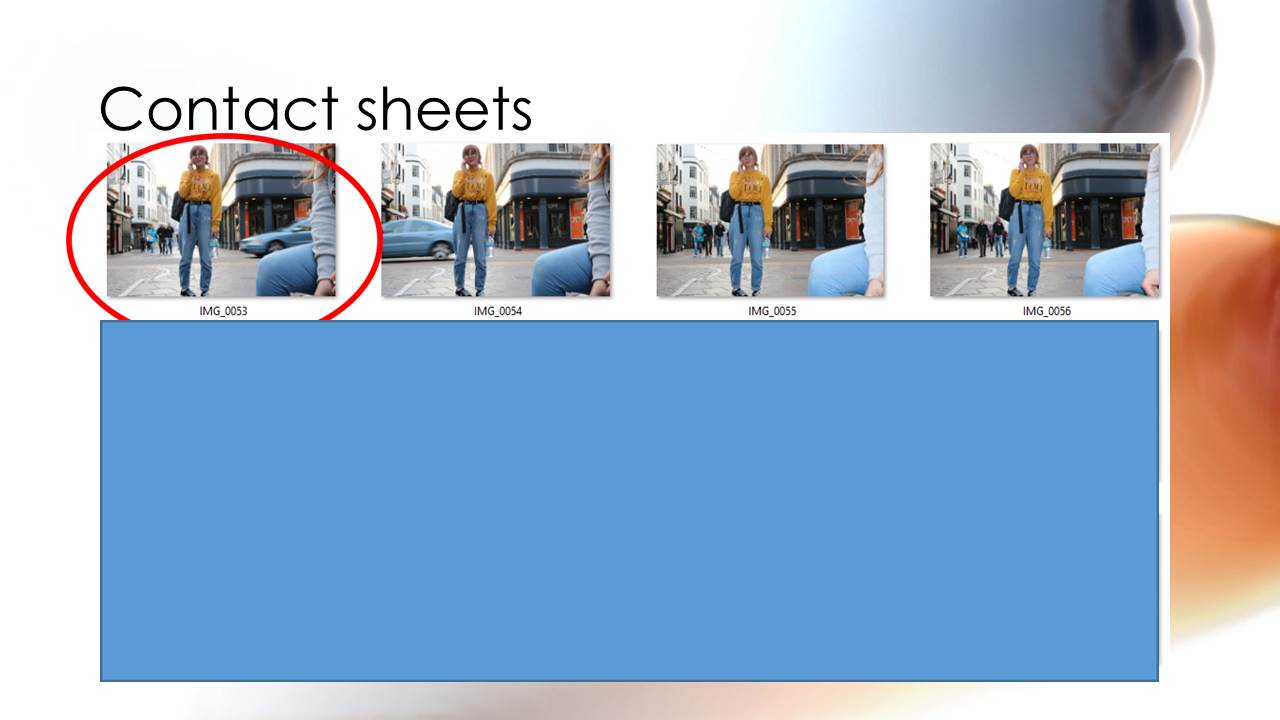
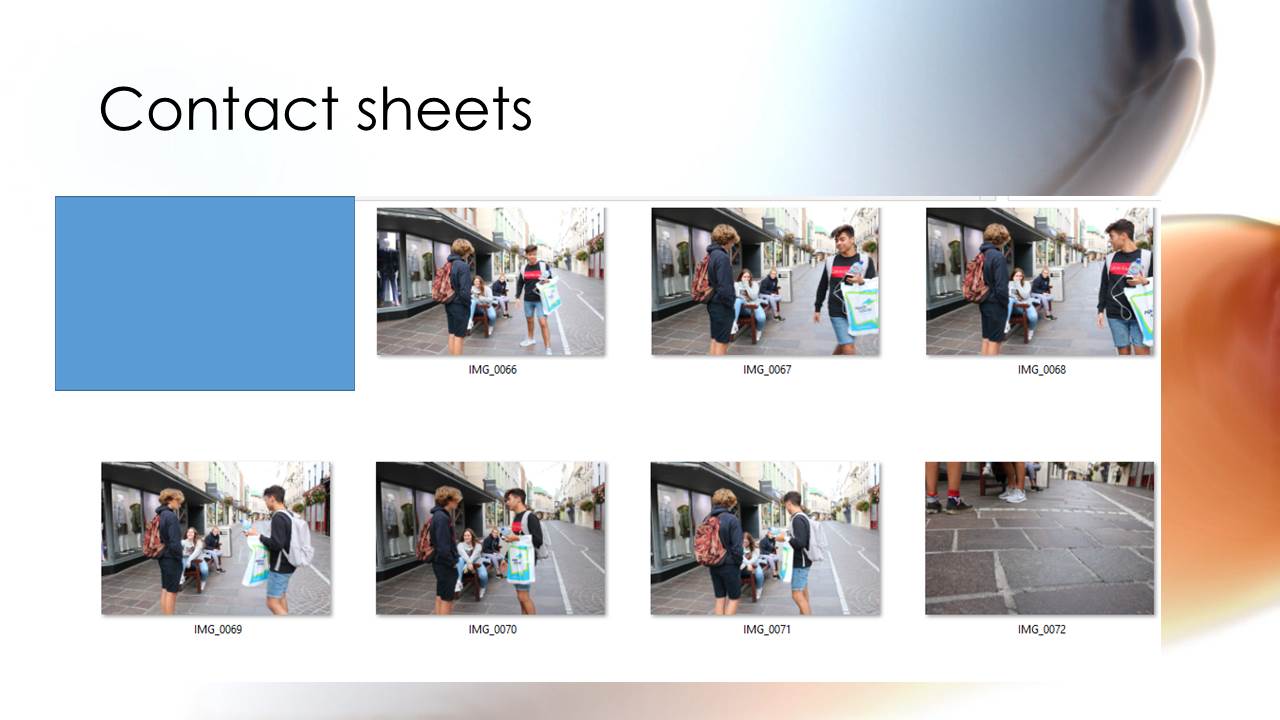
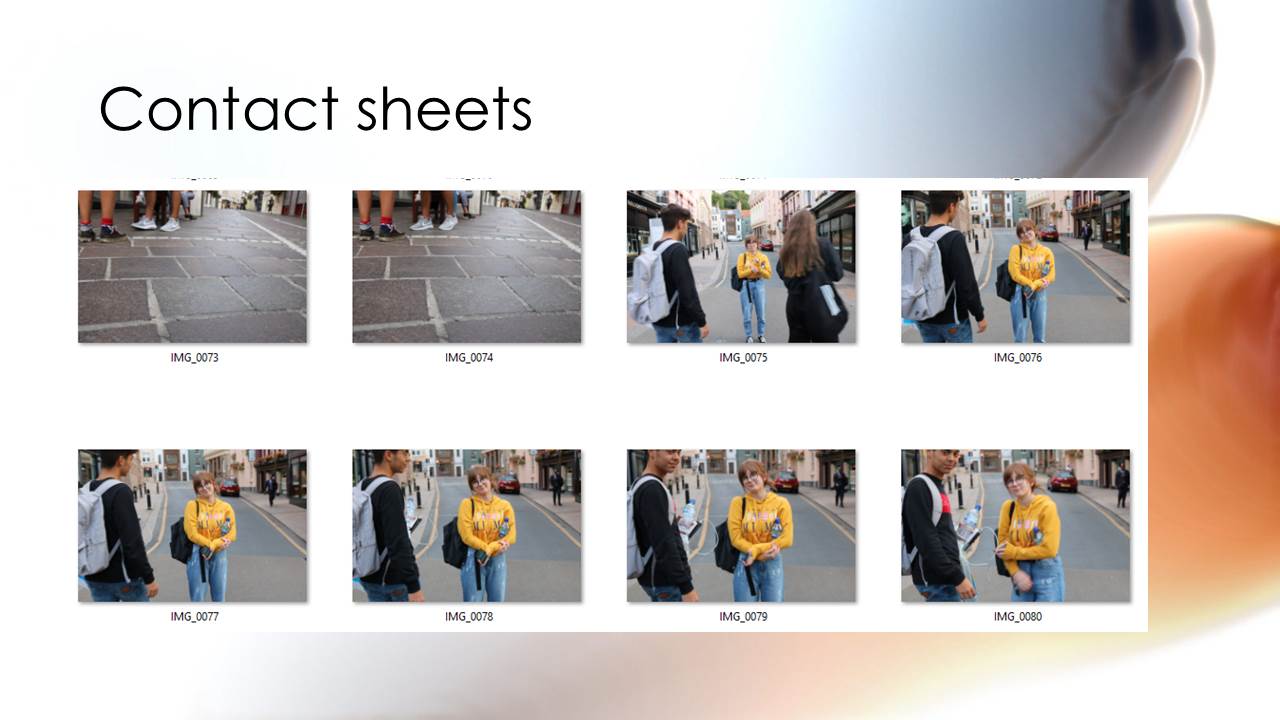
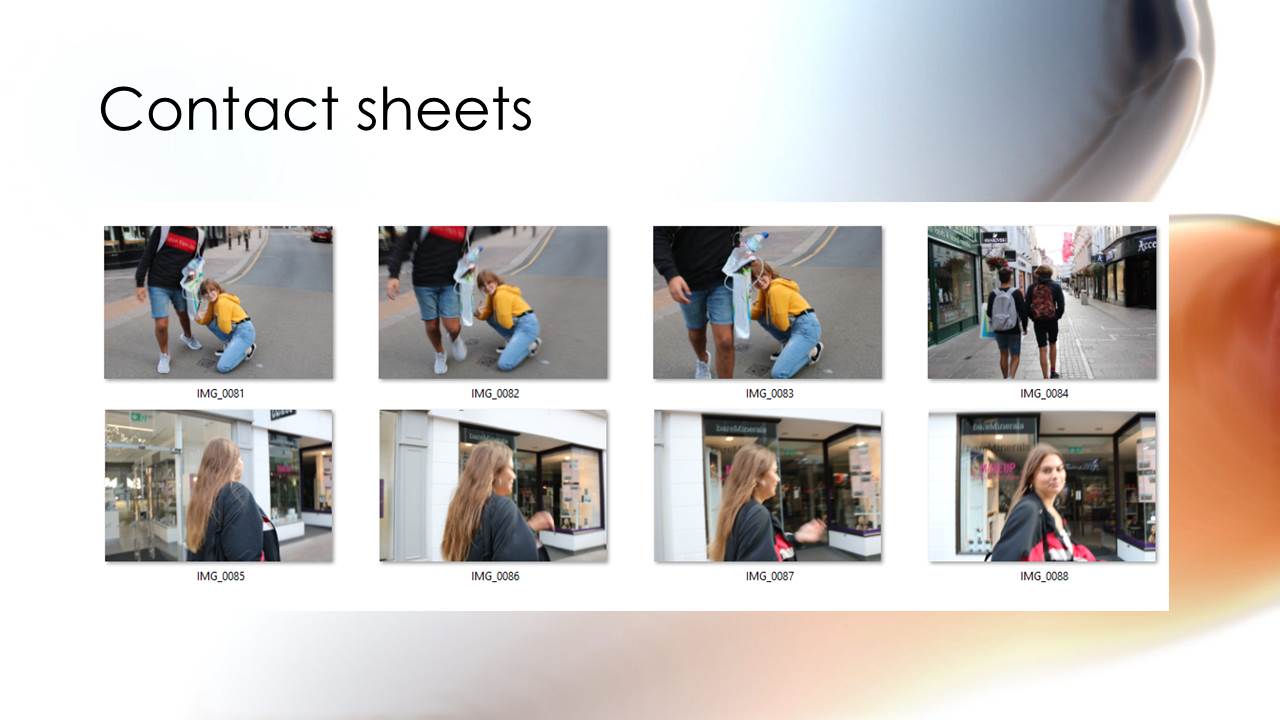
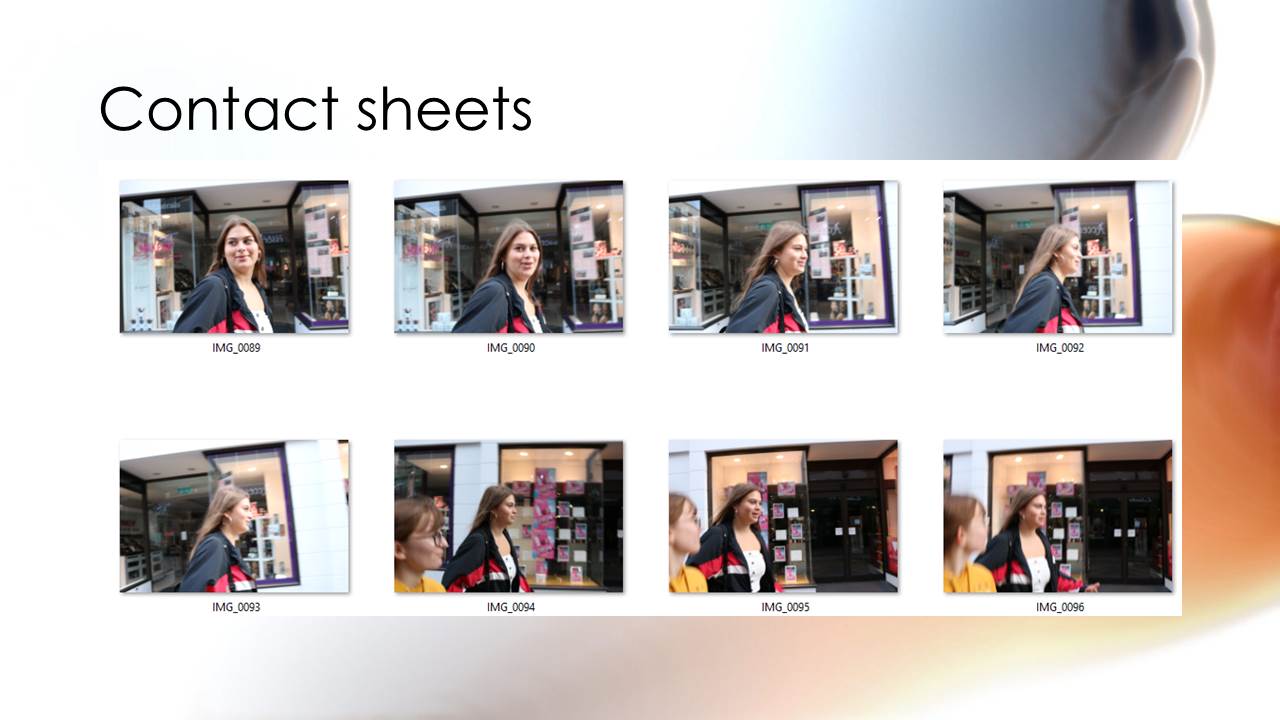


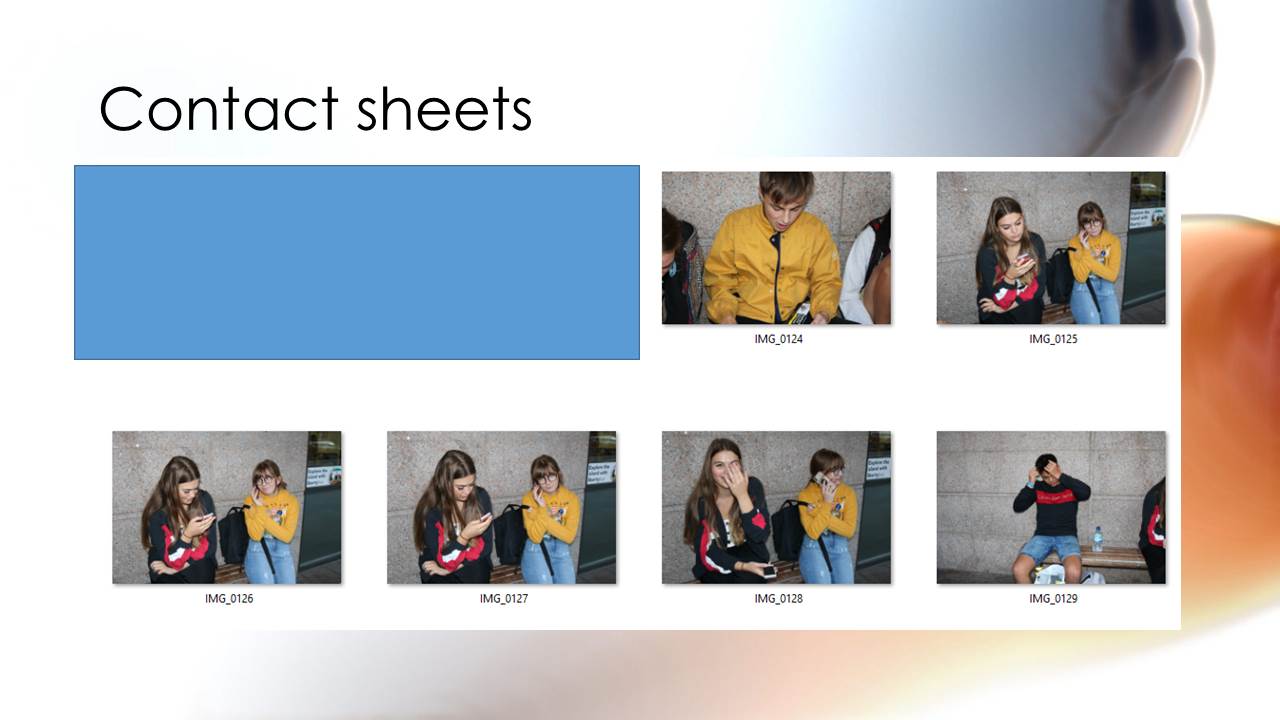
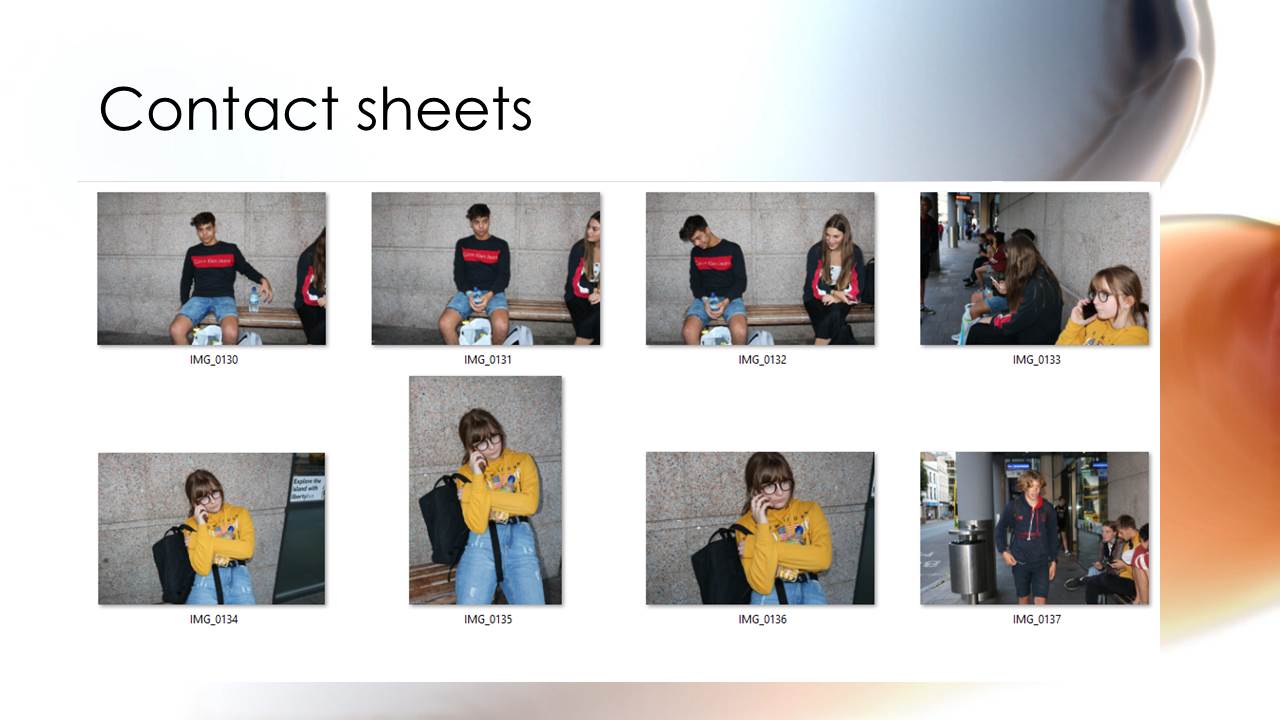
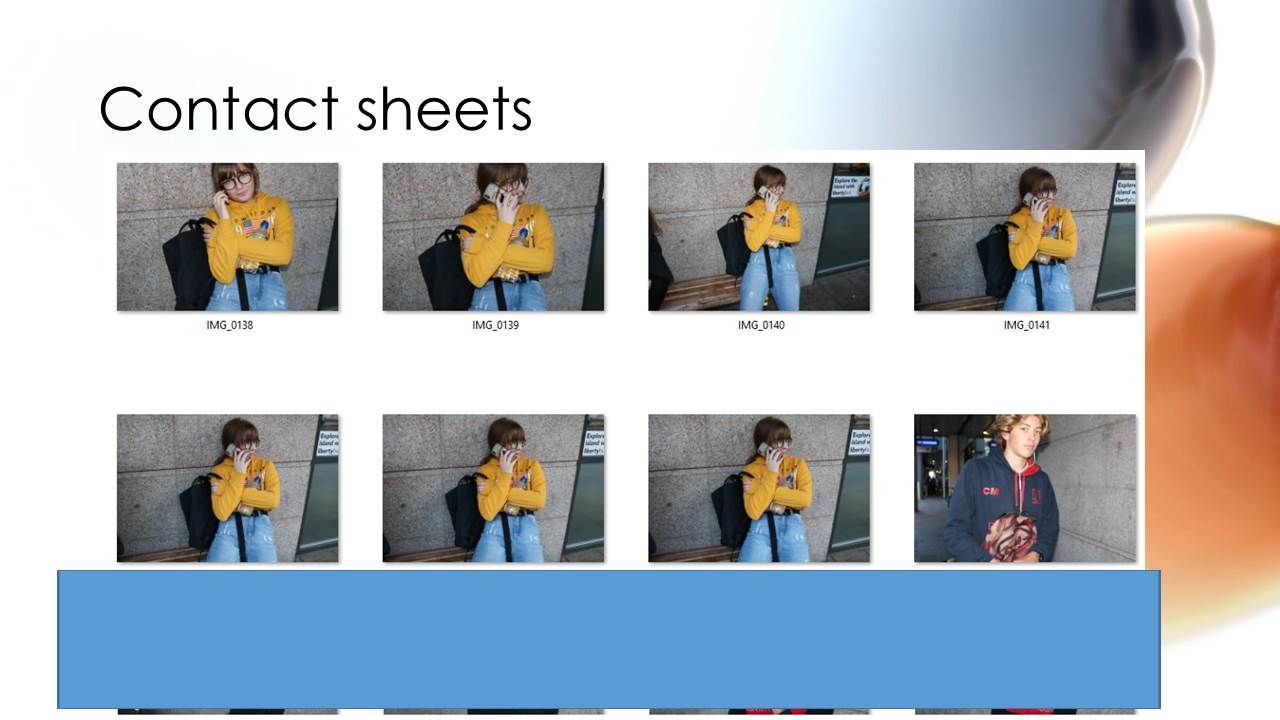
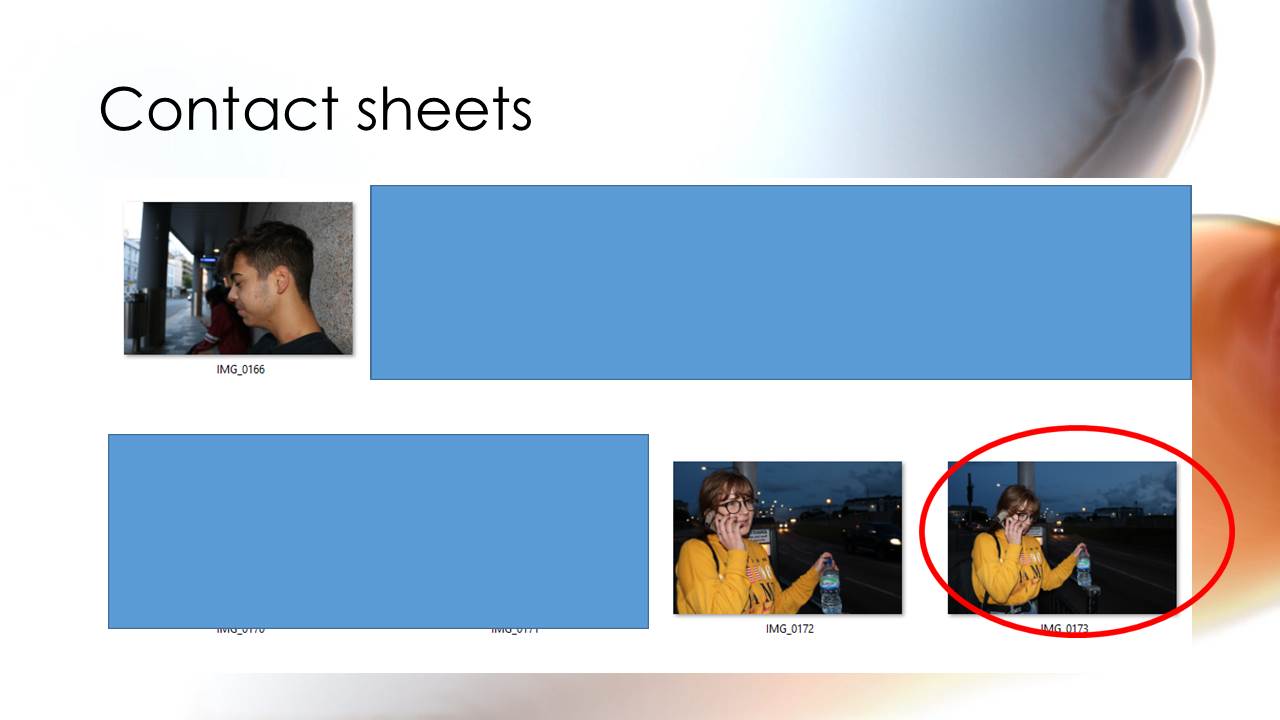
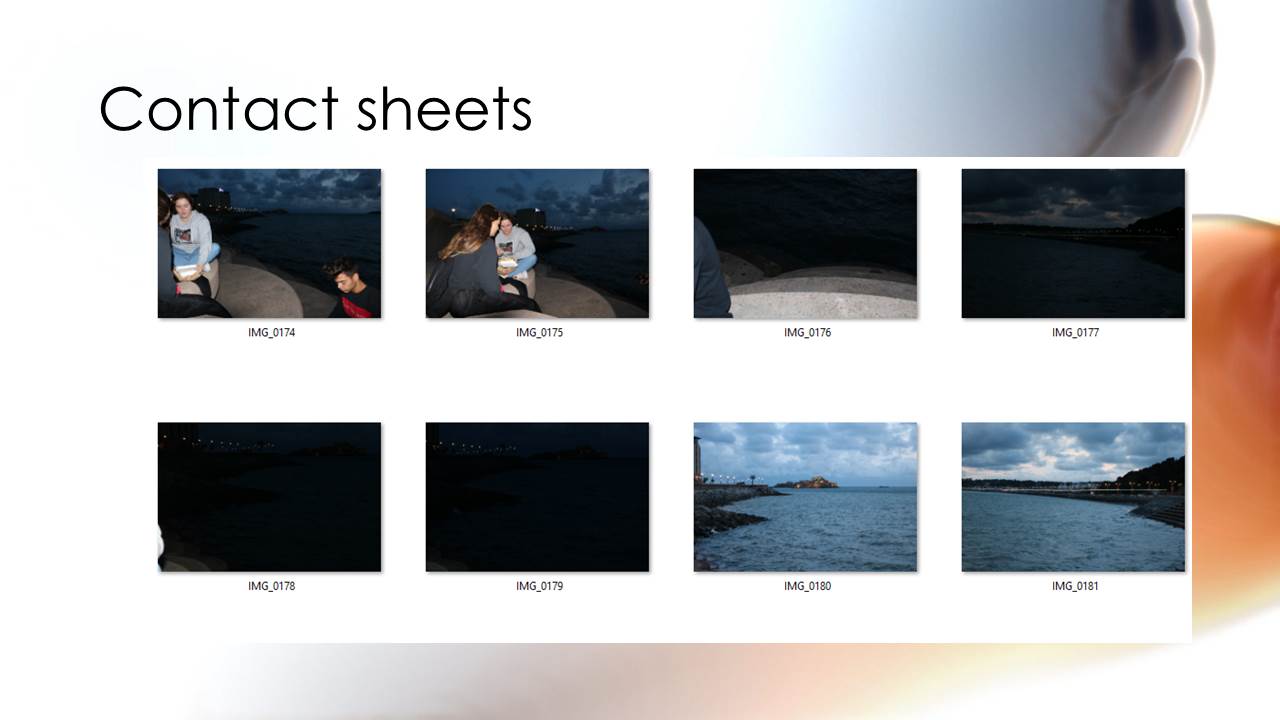
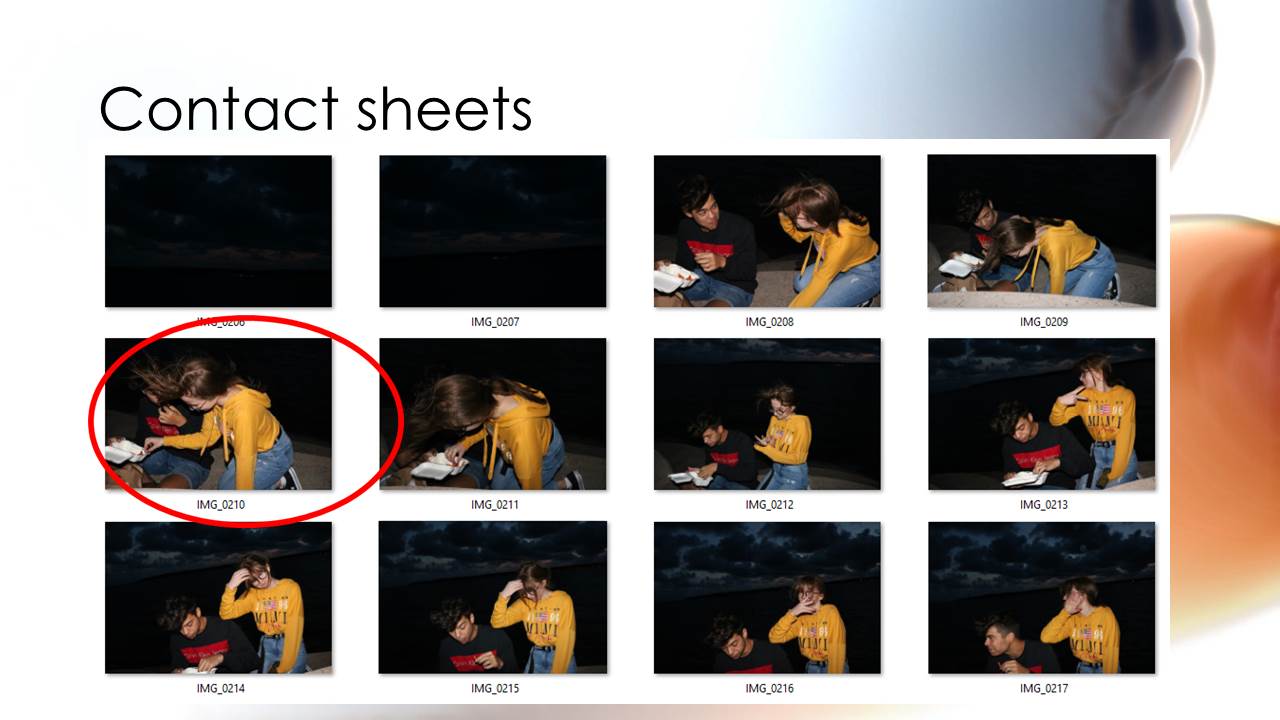

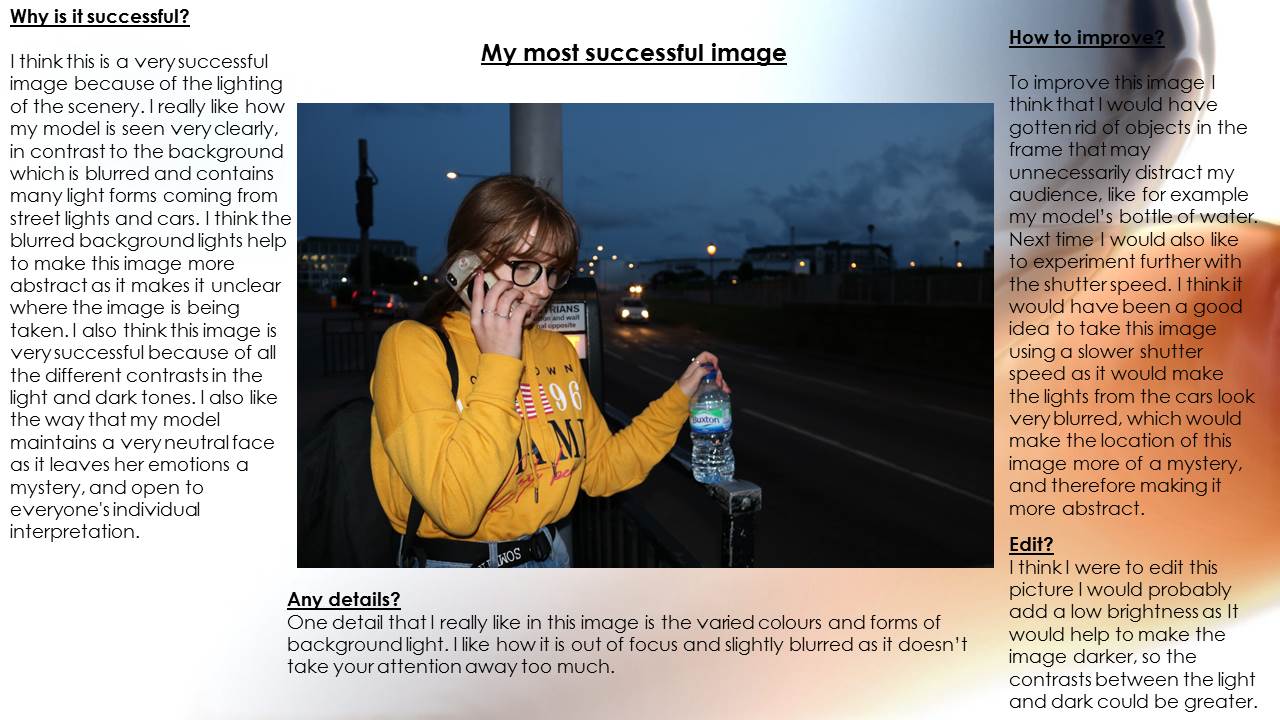
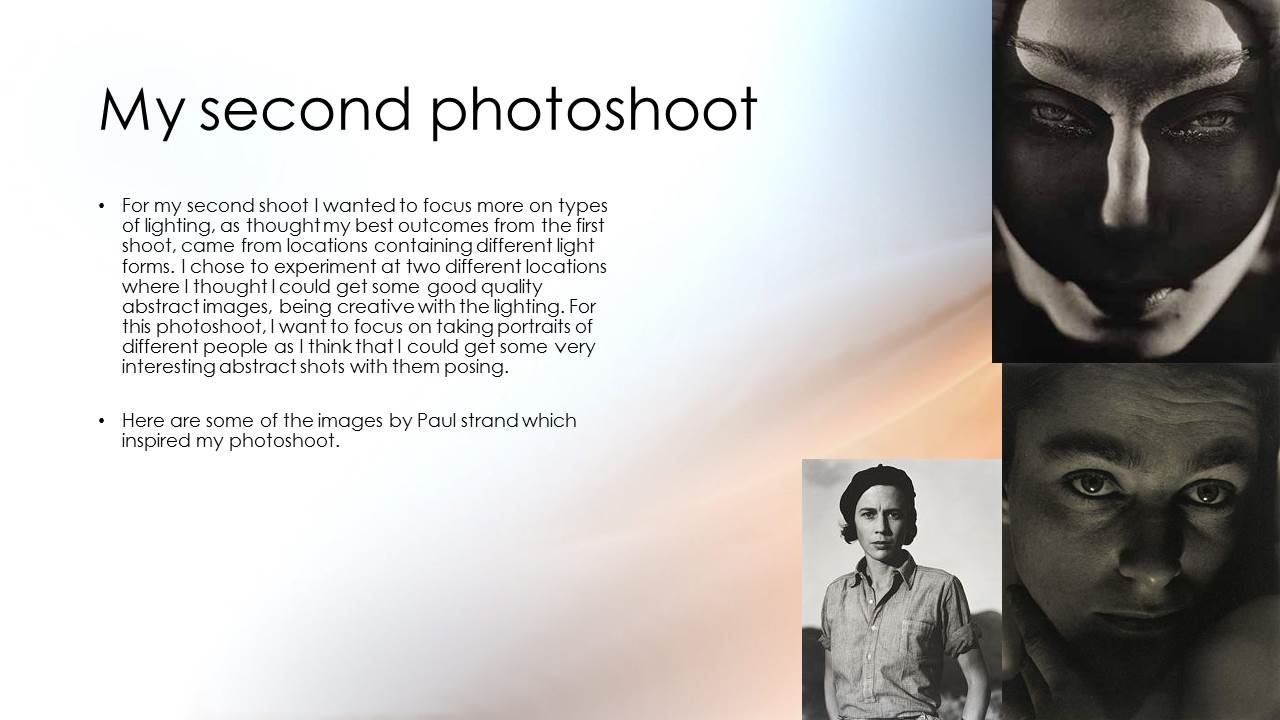
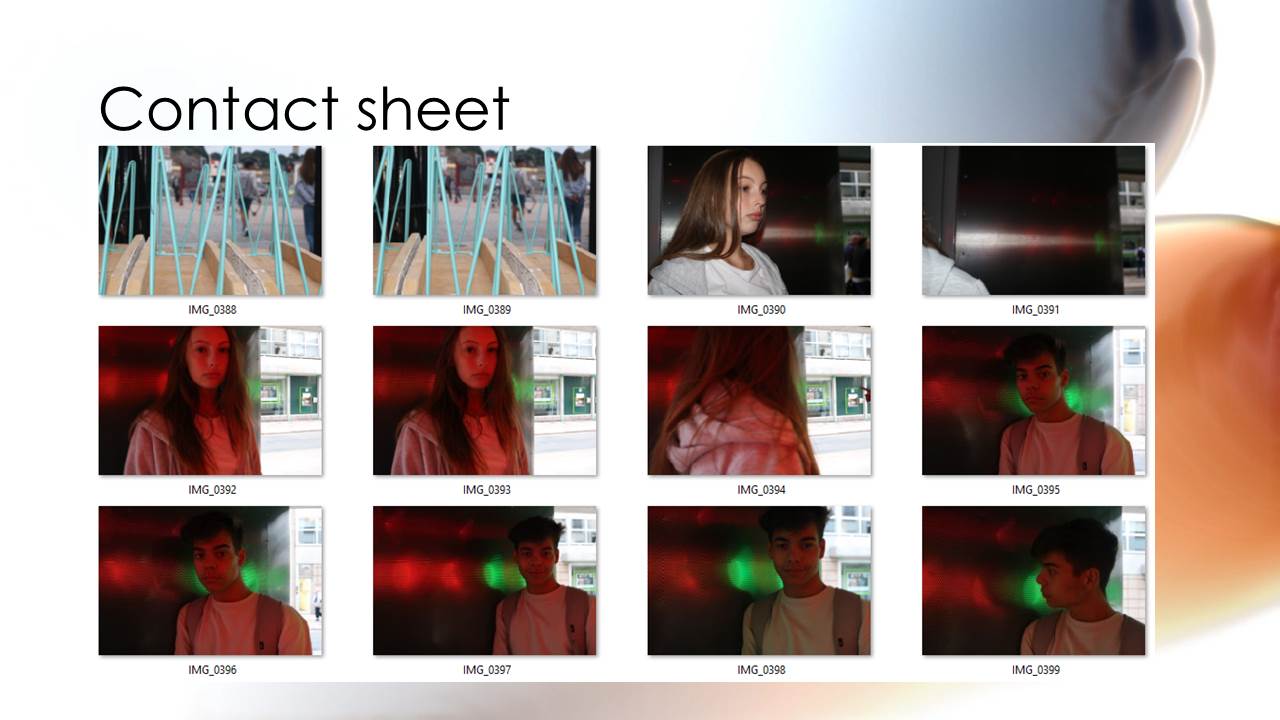

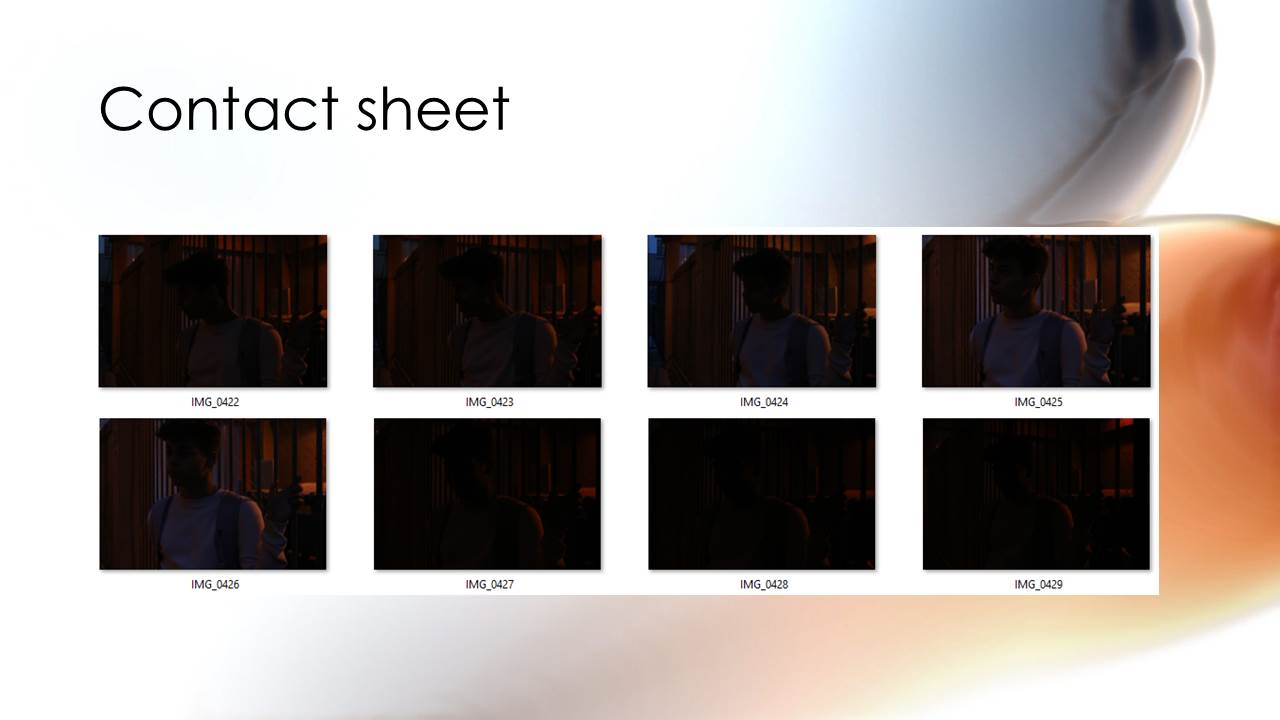
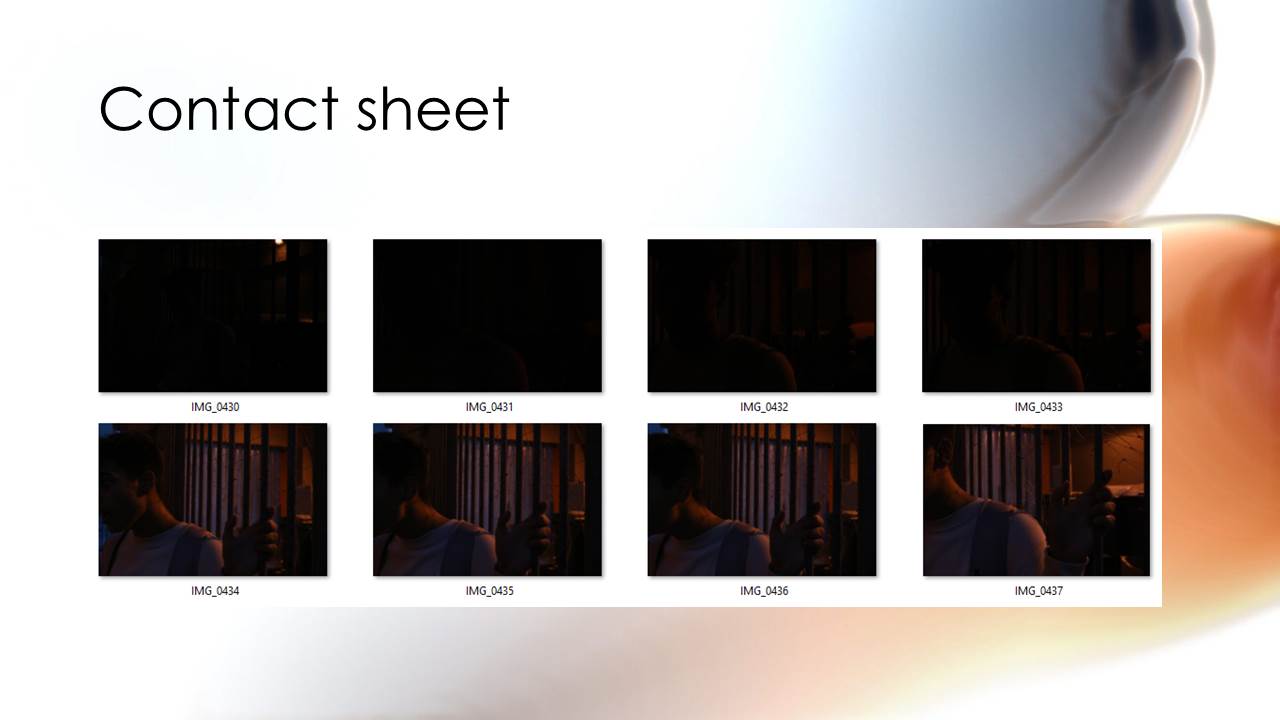

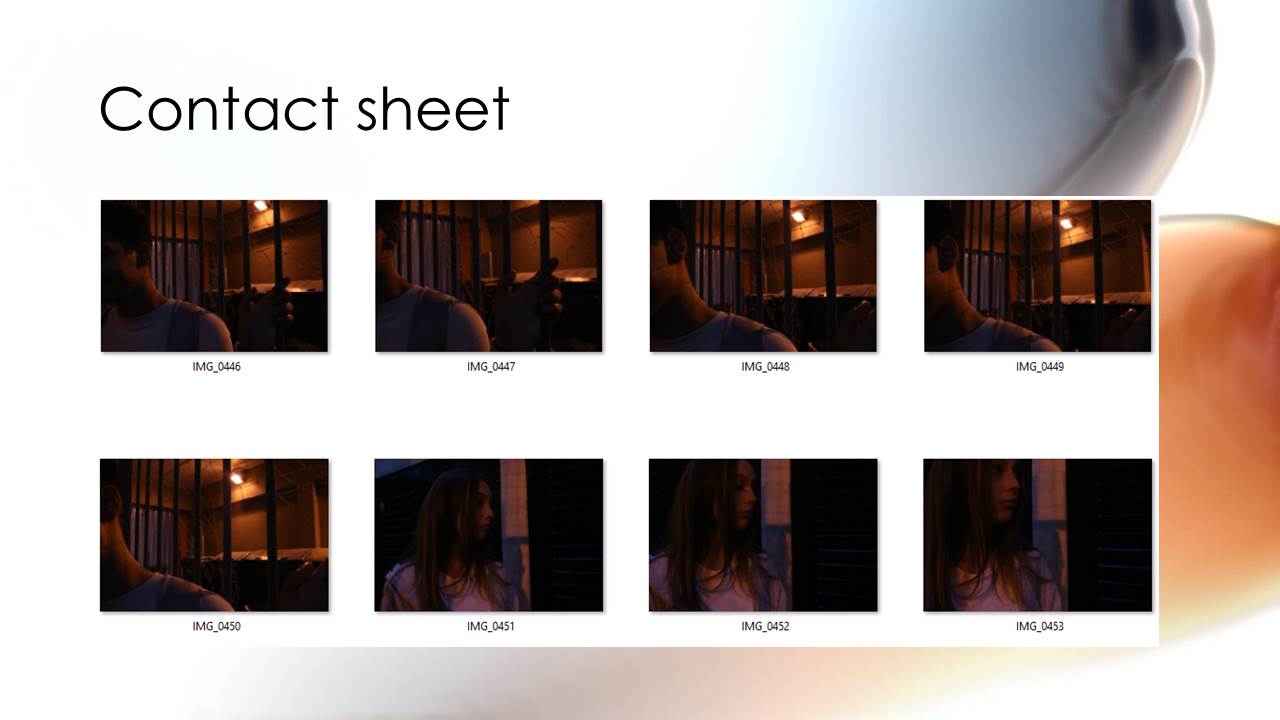
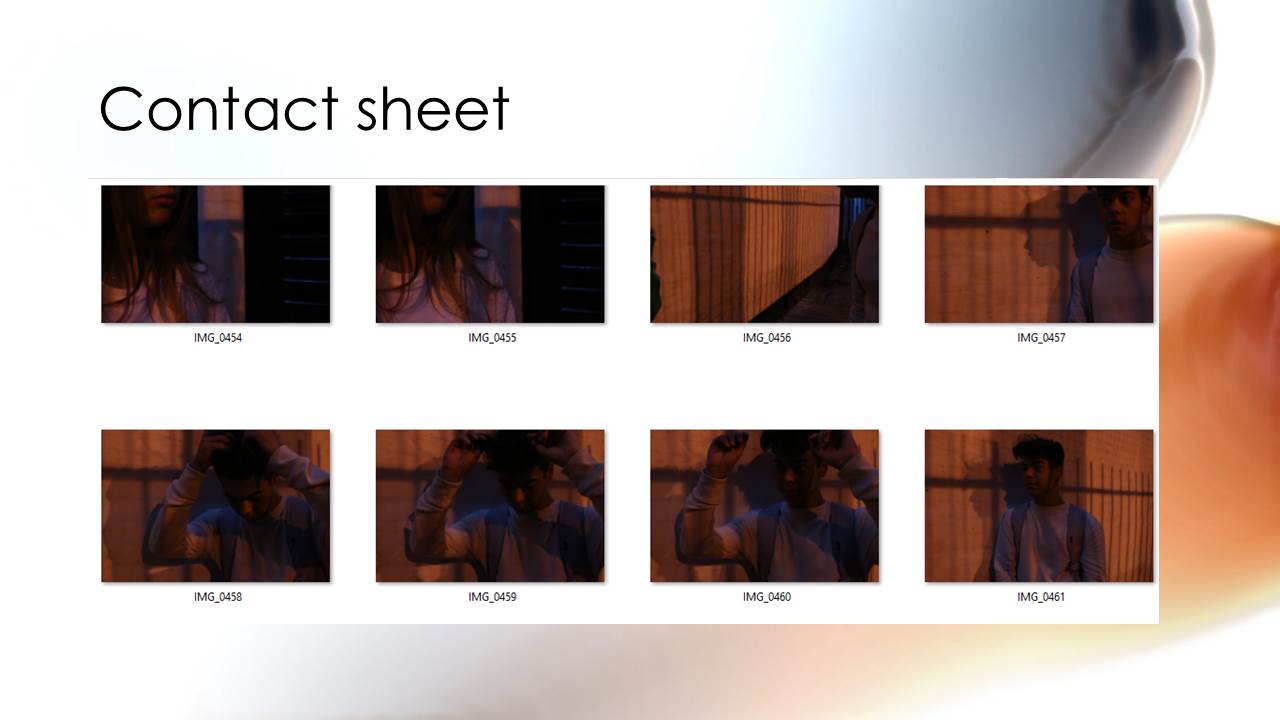
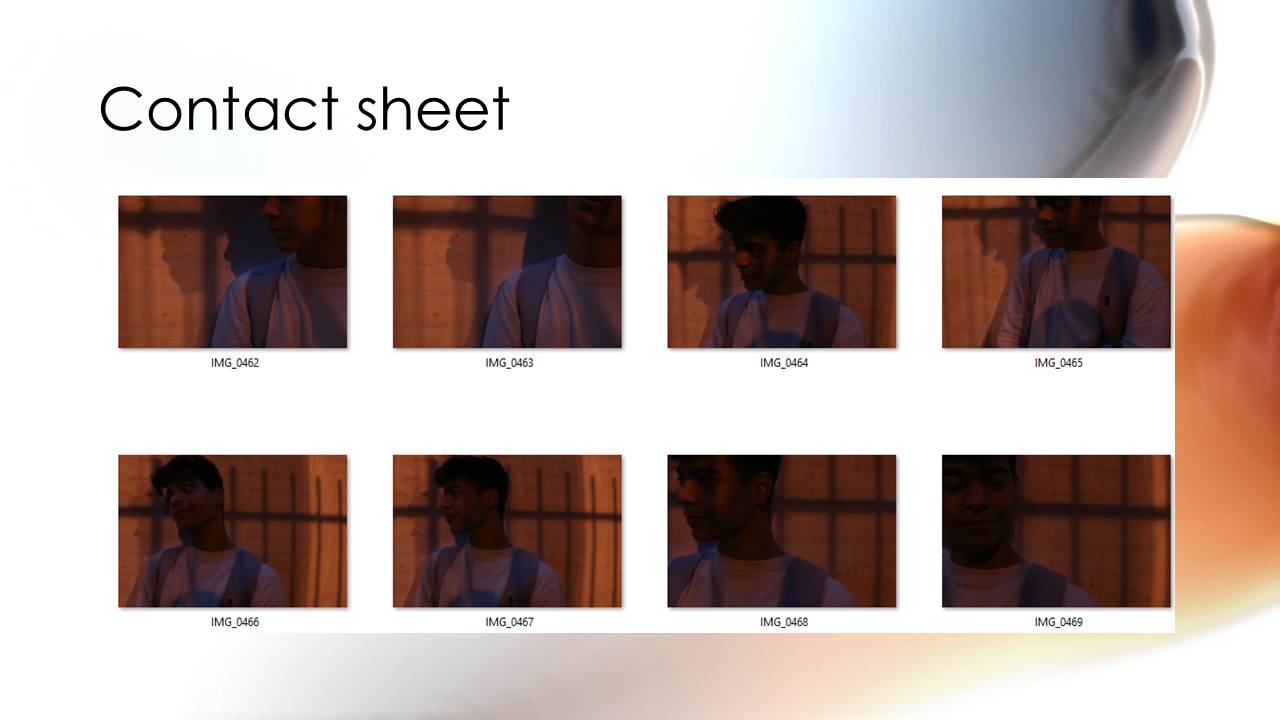
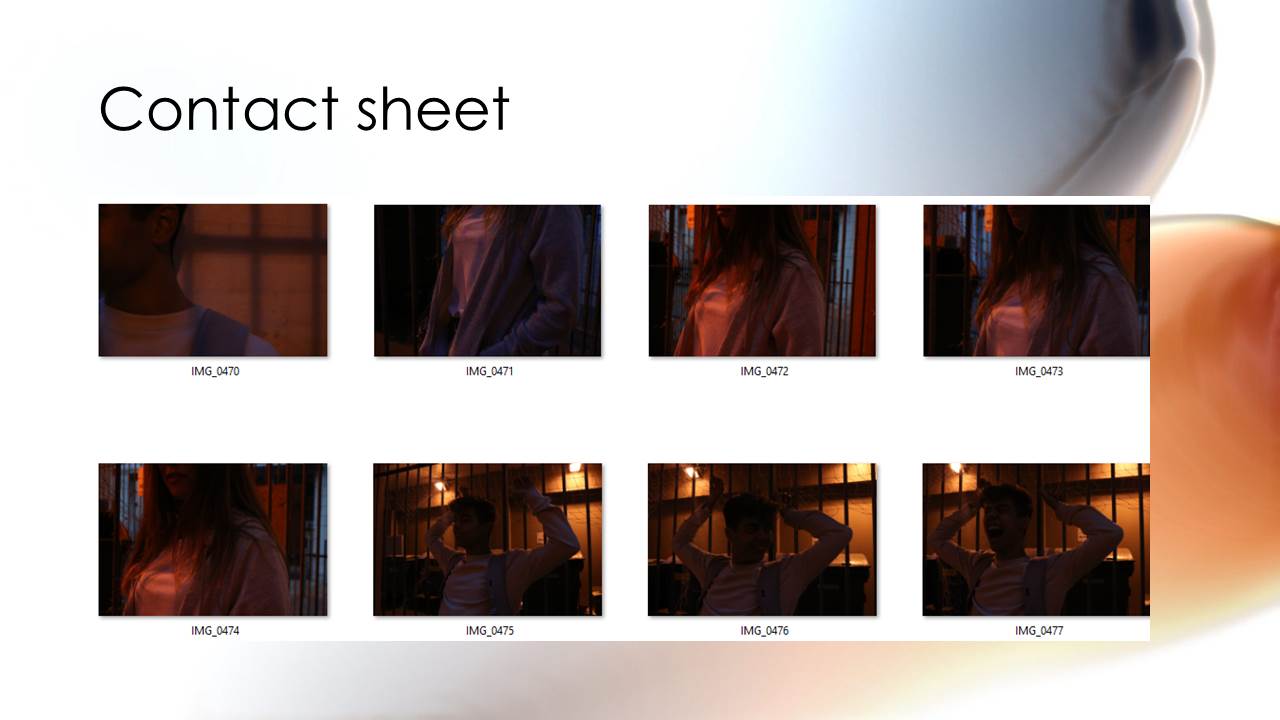

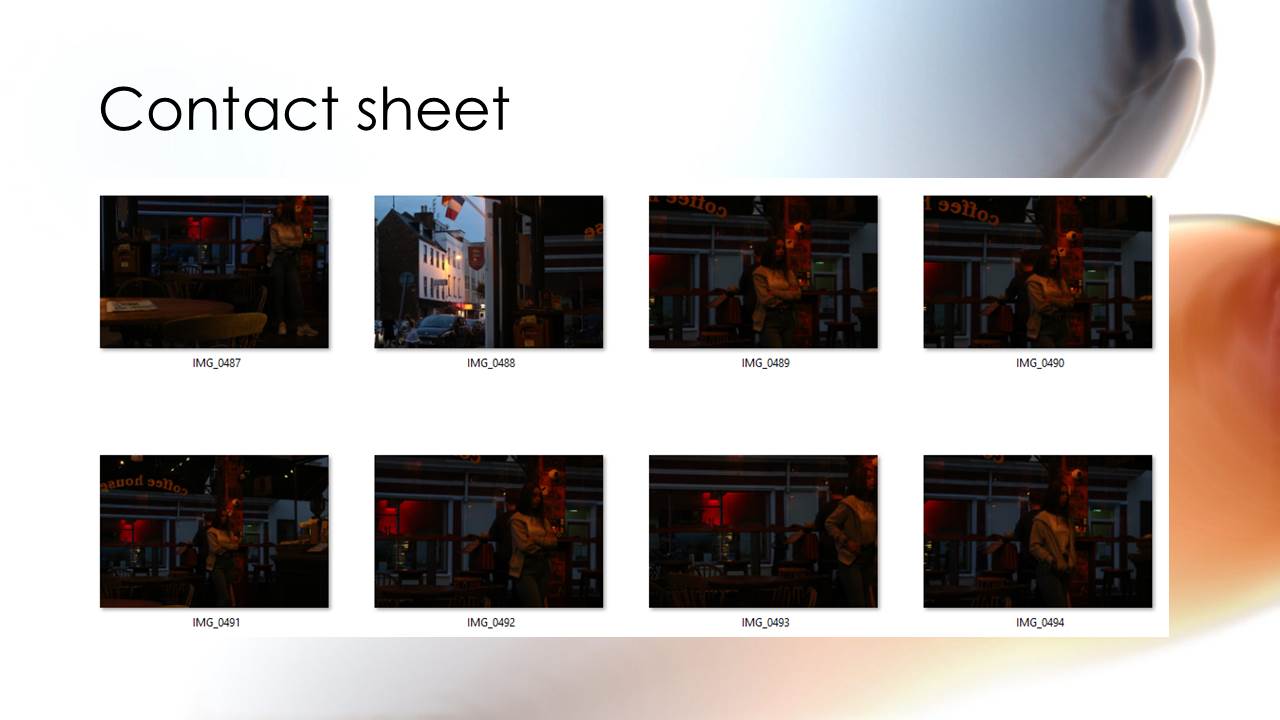
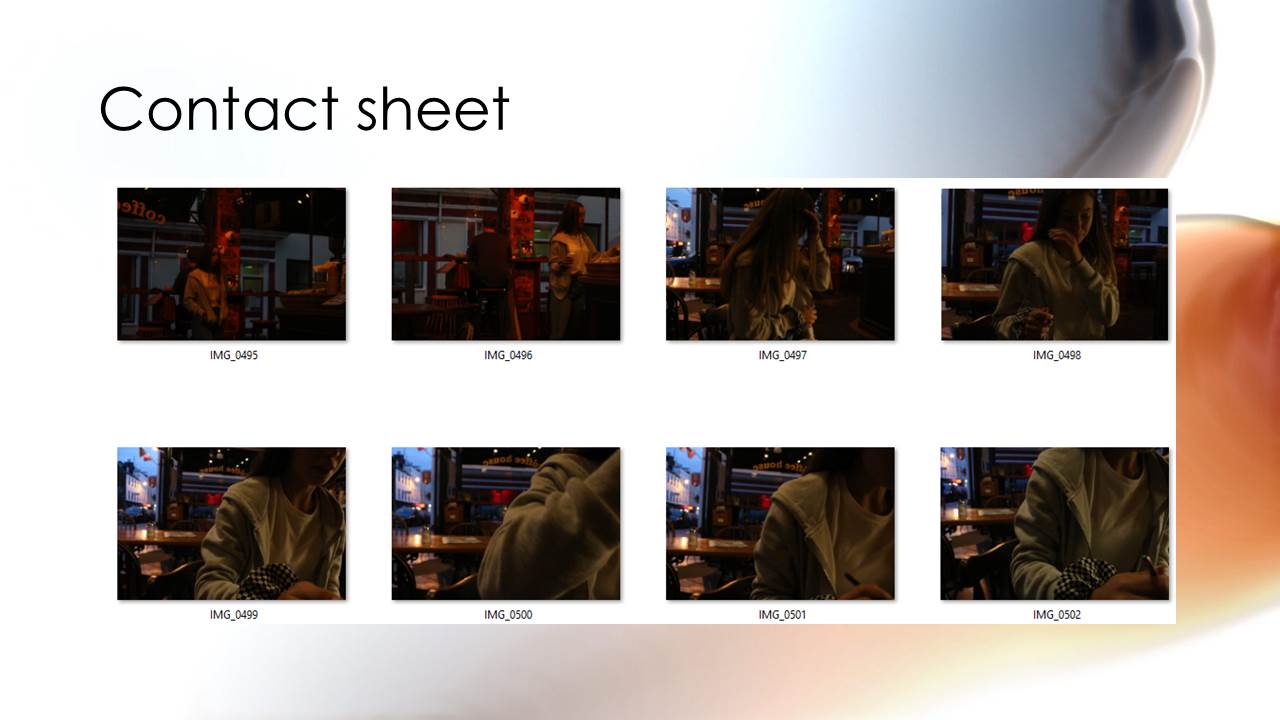

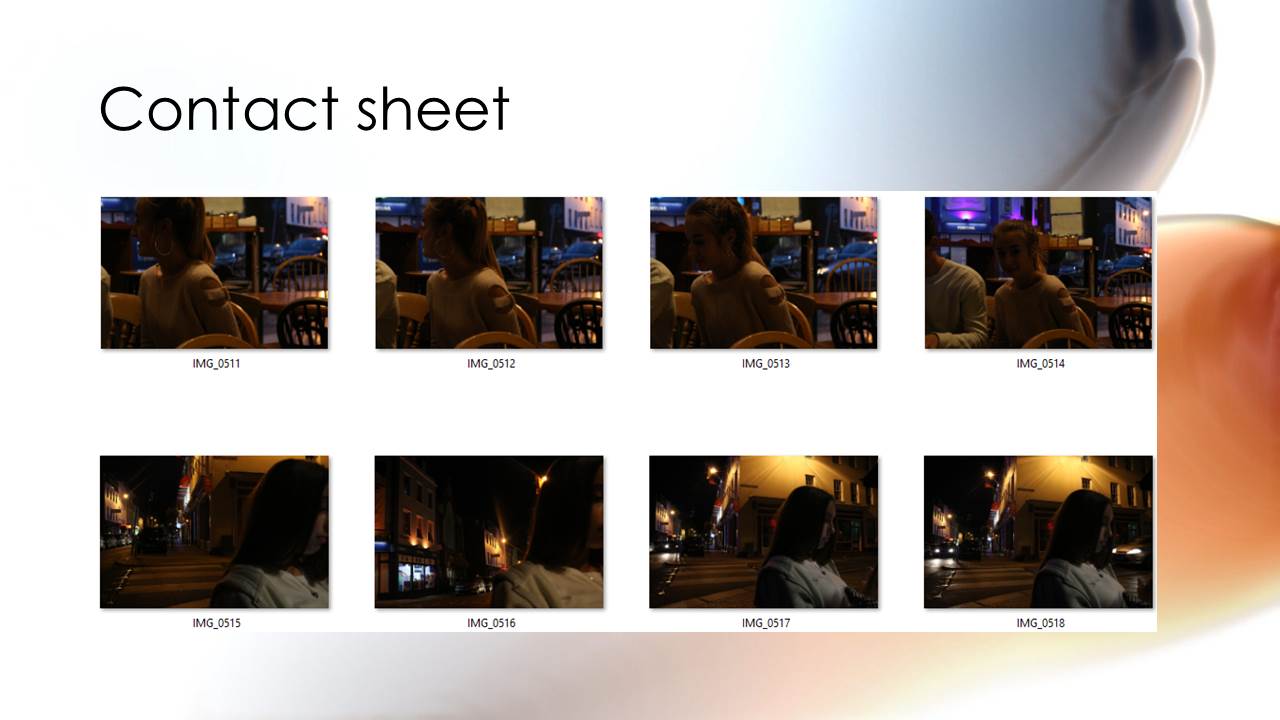








Paper Photos Contact Sheet

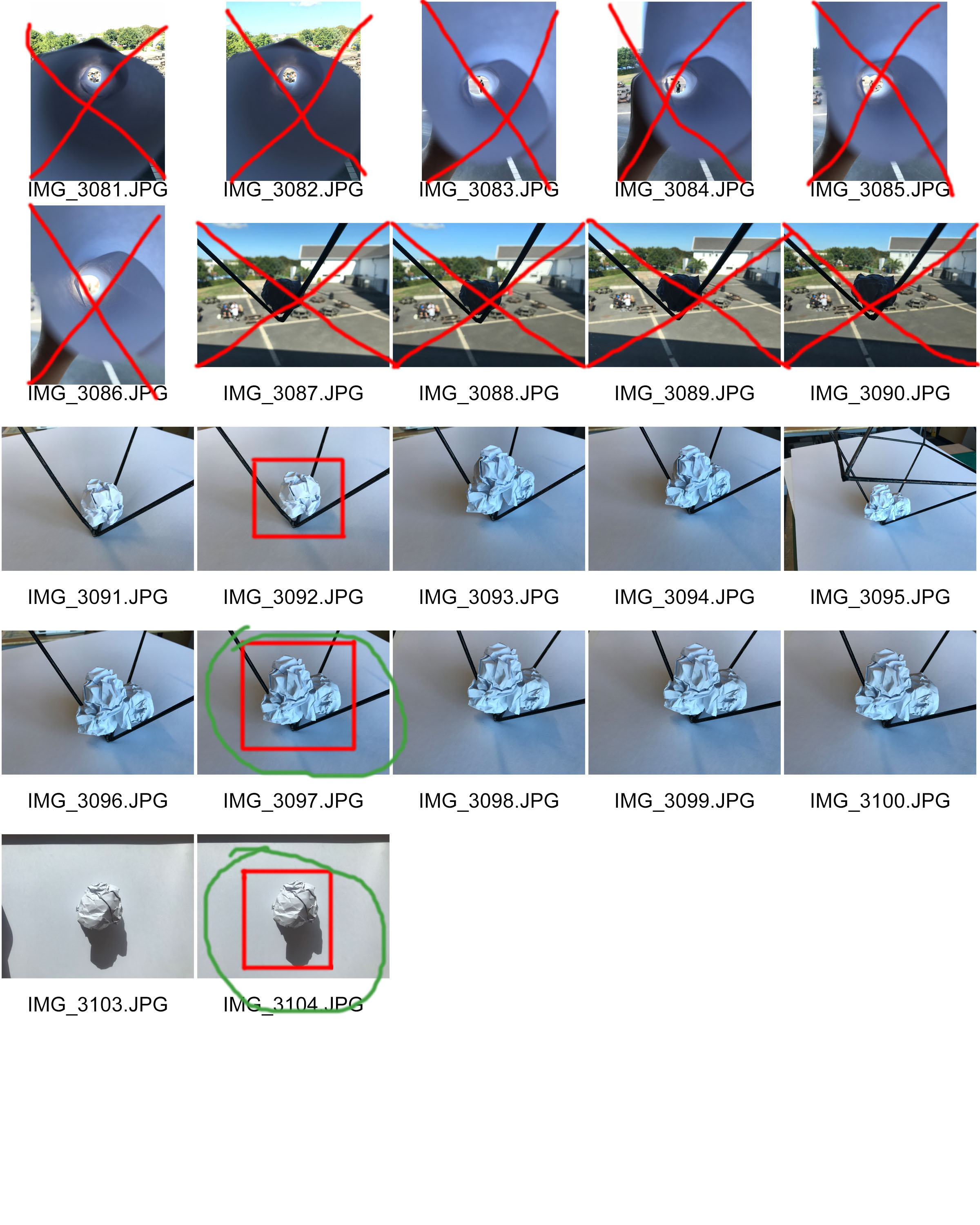
Experiment – Paper Task


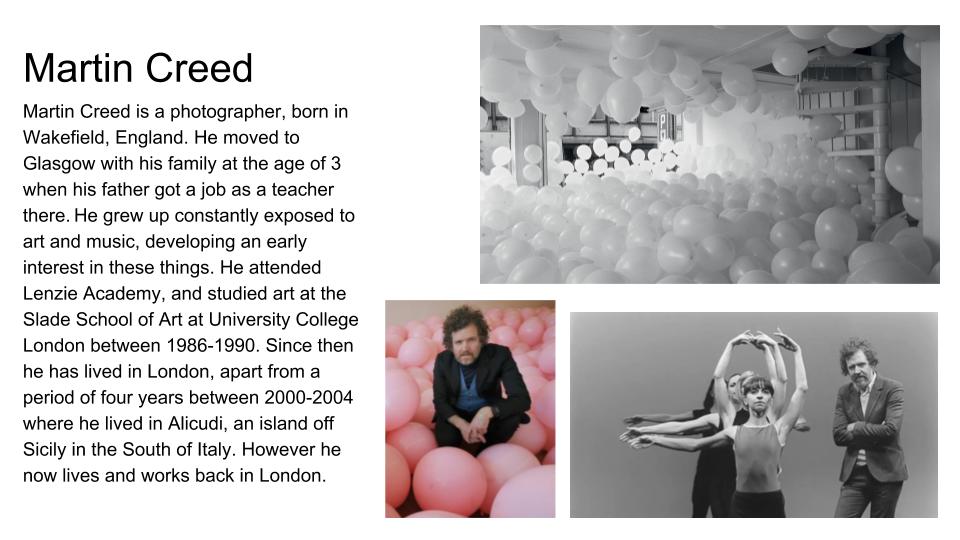

Paper Task – Photoshoot 1:
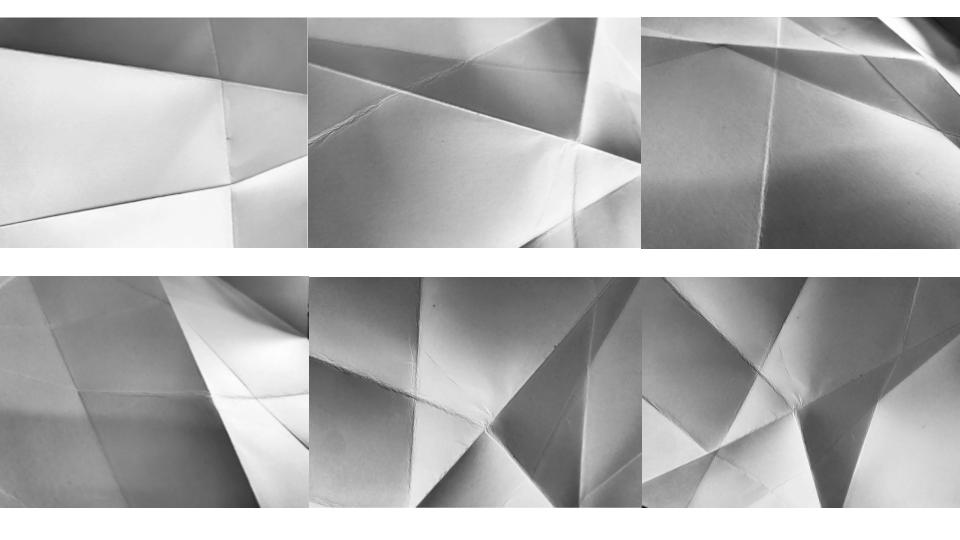

For this photoshoot i folded a single sheet of white paper to create areas of light and shade. I then enhanced the contrast slightly to increase the difference between the light and dark tones in the image without taking away from the natural feel. I found that this was a good example of subtle tone changes and showed texture with the dips and ridges of the paper being accentuated.
Paper Task – Photoshoot 2:


For this photoshoot I placed several pieces of flat or crumples paper onto a black backdrop to create a high contrast. I enhanced several setting during the editing process of these frames and found that this resulted in the dark parts of the image became highly textured and resulted in a sort of metallic or space-like finish to the images, while the white part of the images remained mostly unchanged.
Week 3 | Generating Ideas | Camera Skills | Using Photoshop
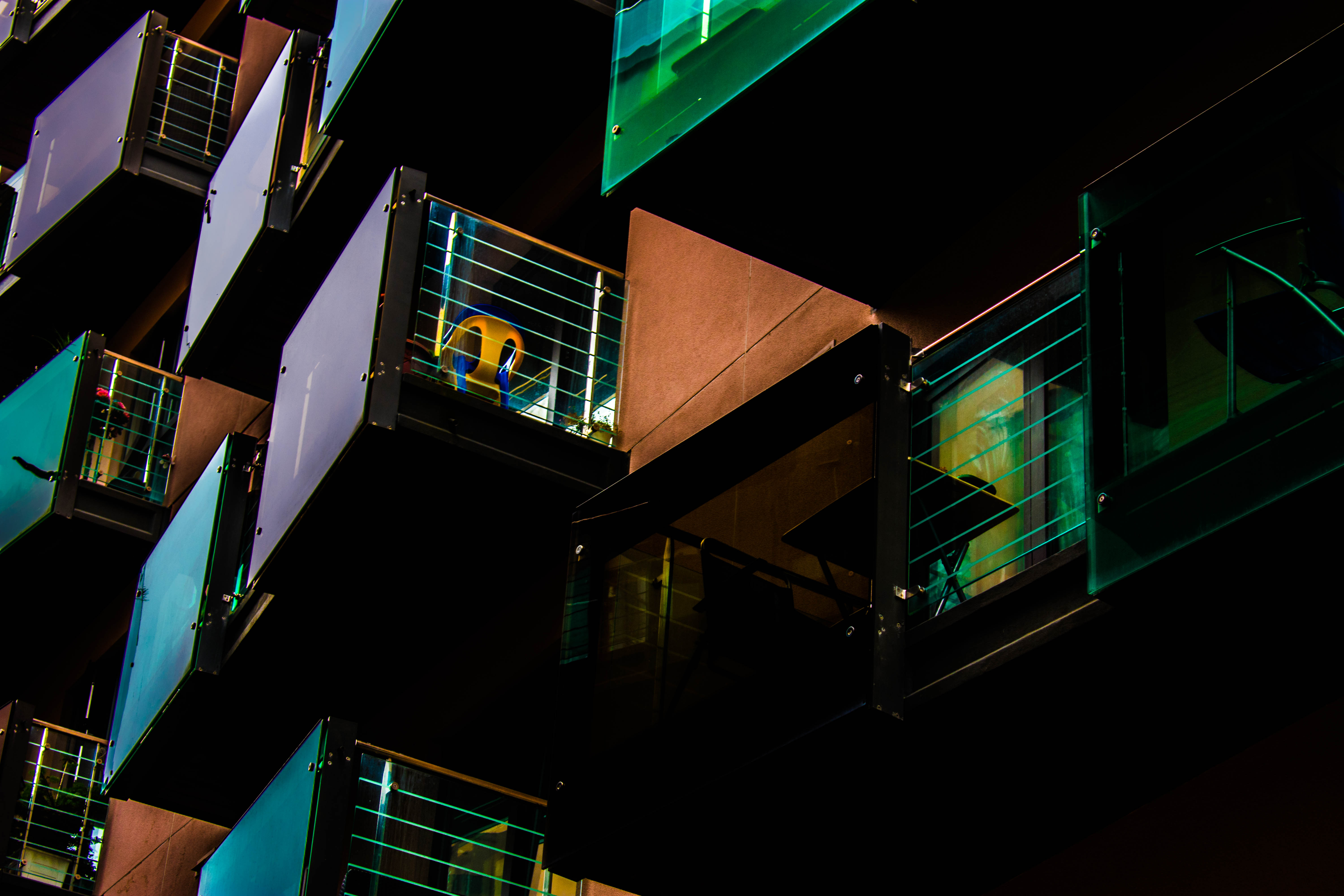
Click this PDF link for a range of resources and that we will be exploring to help you generate new and different ideas whilst learning what ABSTRACT PHOTOGRAPHY can be and how to use your camera and adapt your photographs…
AS Photography UNIT 1 resources
Camera Skills
You must experiment with ease of these skill areas and produce a blog post on each that includes evidence of your experiments and successes…
The images should be of an abstract nature, and show an appreciation of abstract qualities such as line, shape, colour, form, texture, pattern, repetition, symmetry
- Using Auto-Focus
- Using Manual Focus
- White Balance
- ISO
- Aperture
- Focal Length
- Depth of Field
- Show Shutter Speed
Photoshop Skills
- Cropping
- Selections
- Adjustments and corrections
- Transforming an image
- Layer control
- Image size / canvas size
- Double exposures
Working towards a vision…
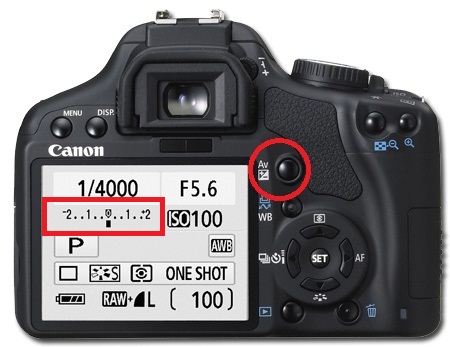
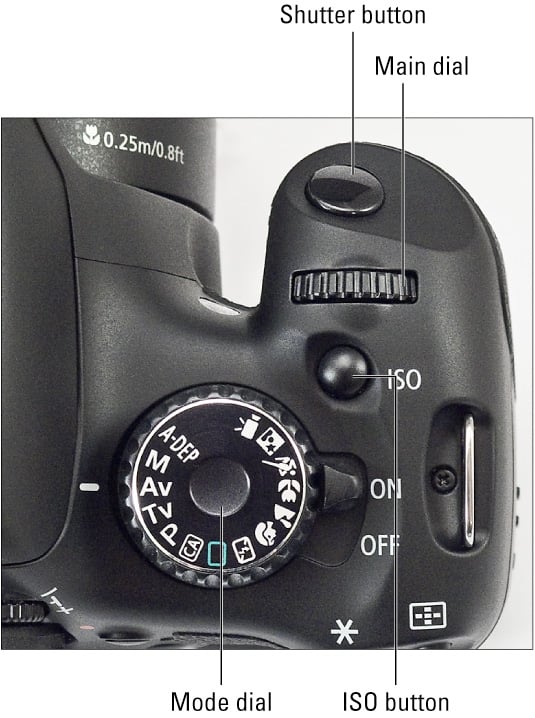
Use this method to analyse key images


Rule of Thirds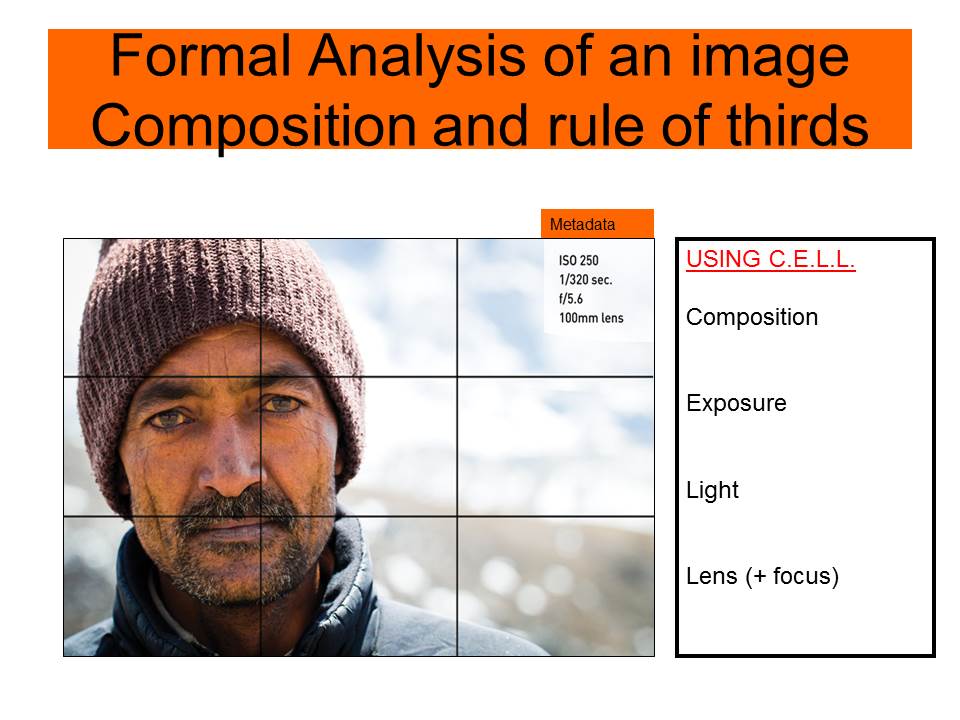
Paper Photography – Edits
Photo Editing
My edits within this project have been kept simple, to play on the idea of how basic capturing paper is. For all edits I leveled them to make them slightly darker or lighter and ensure that the tone and sharpness of the photographs where good. For some I then decided to turn them black and white and adjust the Hue to allow the creases in the paper to stand out. I also inverted some allowing texture to be presented. For some photographs I adjusted the blend mode which helped to create the cool effect. I also decided to try experimenting with the layers and blending options to create different effects. Most of these edits I believe where successful and I am happy with most outcomes, however there are a few photographs edits I do not think where the best but I left them in to show development and experiment.
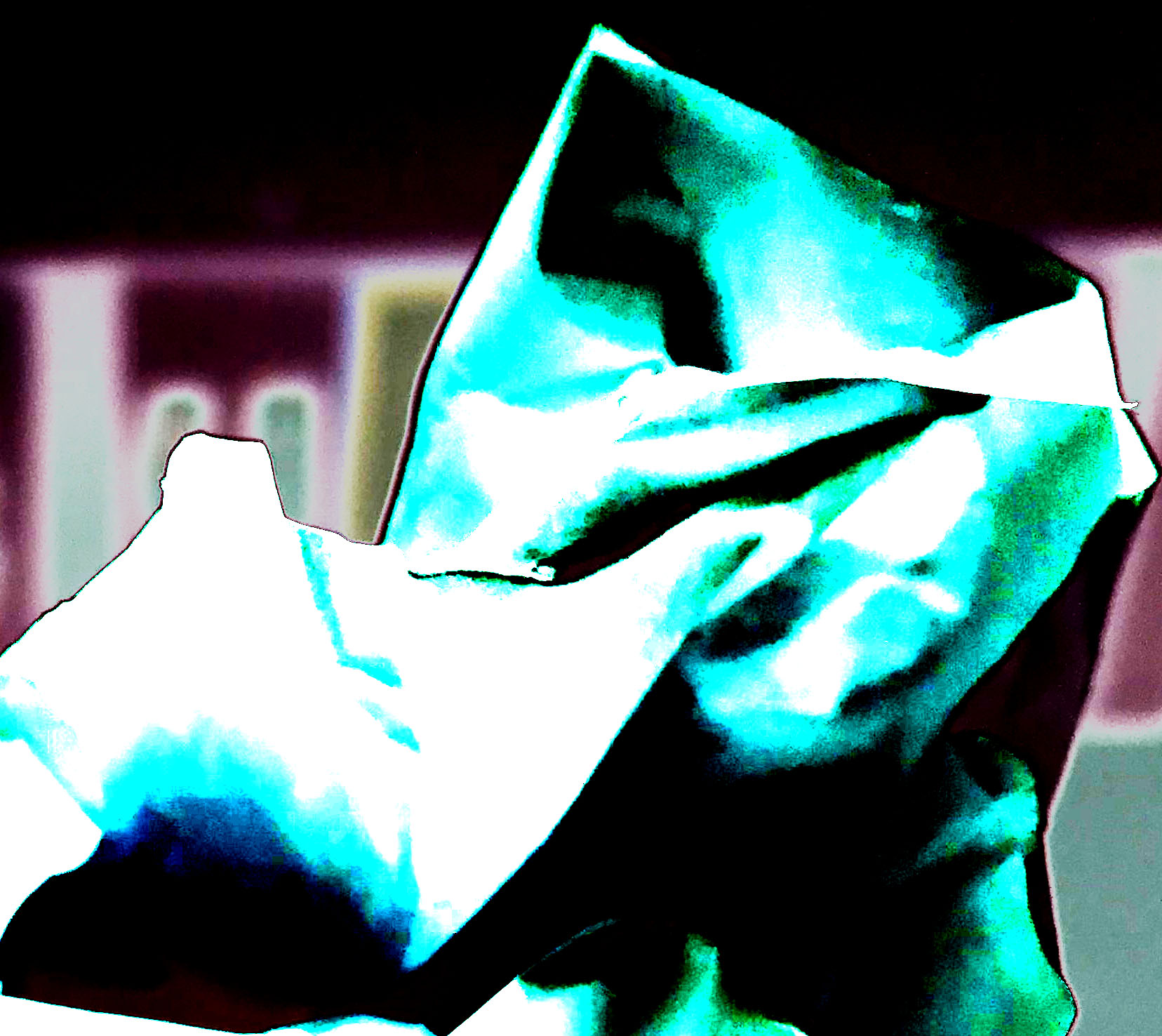
For my first edit I started turning the image black and white. I then decided to invert the image which made black areas white and white areas black. I then changed the hue to a more green colour. Finally using the curves I made the image lighter creating noise in the photograph. Overall this edit has been successful in the fact I got to experiment with different tools on Photoshop. However, it is not my strongest edit.

This second edit, in my opinion, is my strongest edit as it shows a contrast in tones and is interesting for viewers to look at. To do this edit I started off by turning the photograph into black and white, I then adjust the levels to make the photograph seem darker than what it actually is. I then proceed using the paint brush tool to pain the background black allowing the main focus to be on the paper itself.

In my third edit of this photograph I decided to level the photograph to make it seem naturally lighter. I then turned the photograph into black and white and inverted it. I then changed the blend mode until it gave off this effect, which clearly shows the texture of the paper.
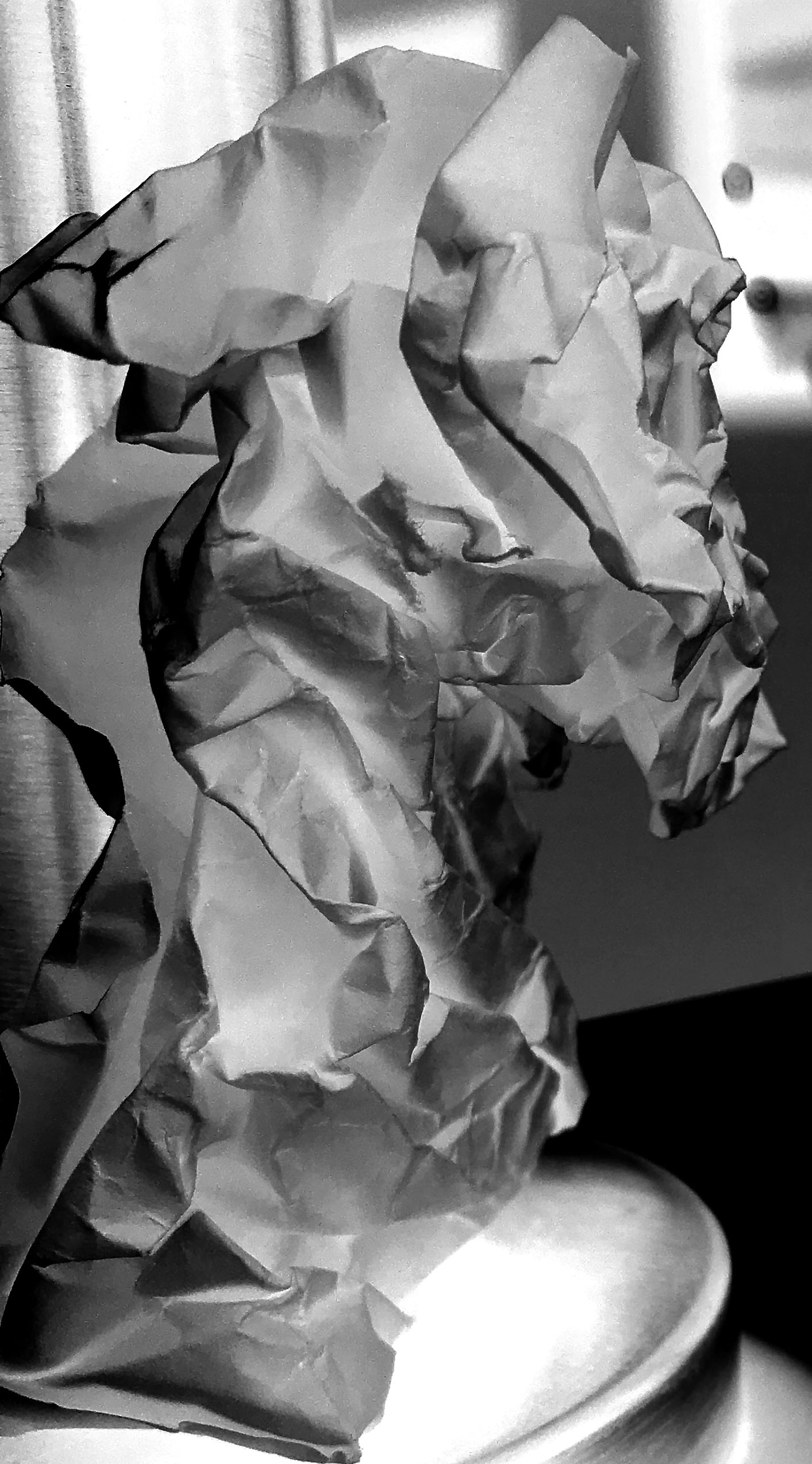
For my next edit I decided to use a different photograph. I carefully cropped the image to take away most of the background. I then turned the photograph into black and white and inverted it. Moving on I adjusted the curves to allow the different tones of the photograph to clearly be presented.
In this photo edit I wanted to clearly show the light which is beaming through the hole in the paper. I thought the best way to do this was simply turning it black and white which allowed the different tones to clearly illustrate the light.

Due to this simplistic photograph I decided to keep this edit simple. I simply adjusted the curves to allow the different creases and tones to be shown. I then decided to turn the photograph into black and white which has created this cool effect making the photograph more pleasing to look at.
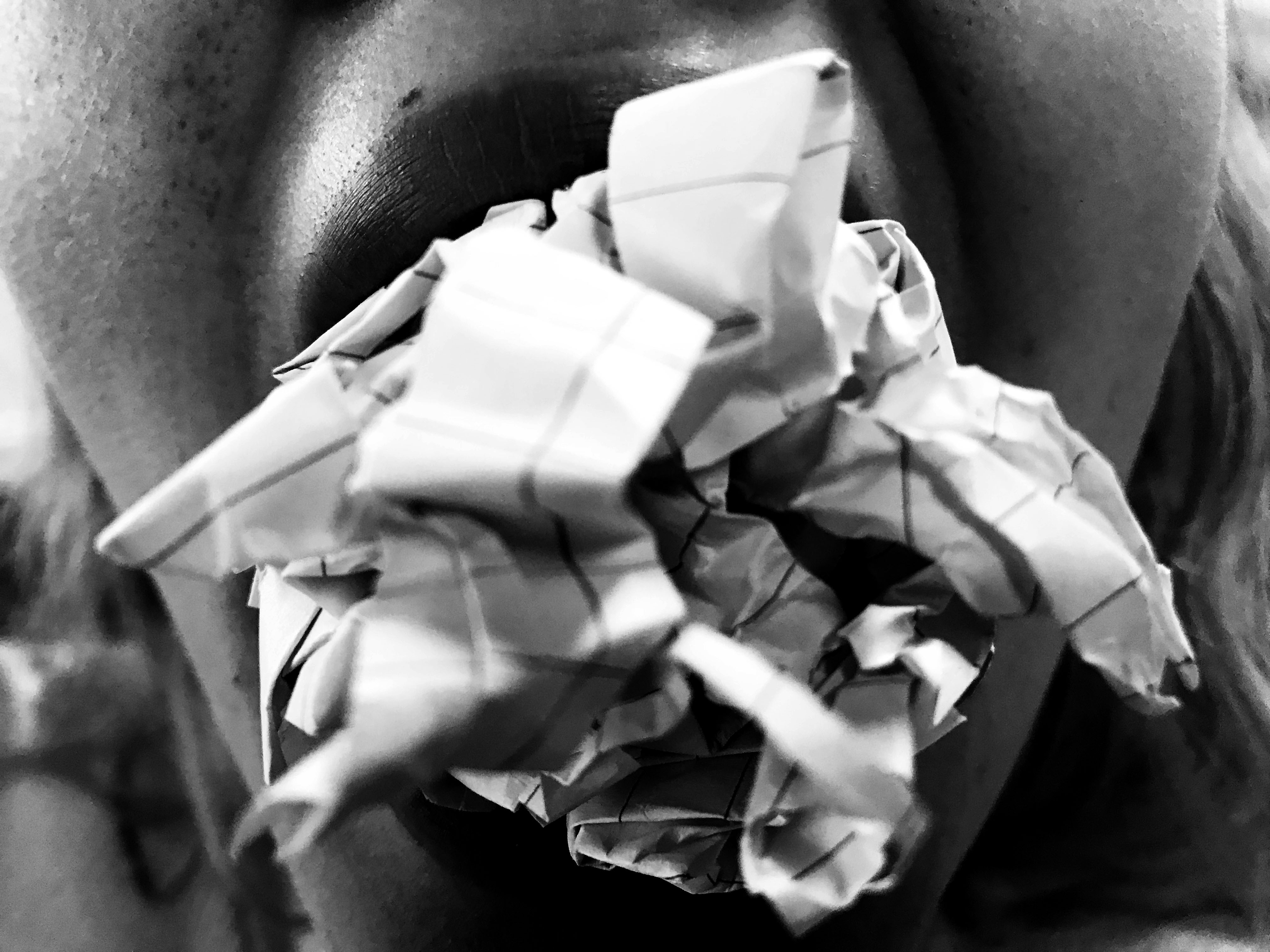
For this edit I wanted to show the context of where the paper has been placed, thus I decided not to crop the image. To allow the texture of the paper to be shown in this image I simply turned the photograph into black and white and adjusted the curves to allow the mouth and paper to be clearly shown to viewers.

For this edit I wanted to capture the paper trapping the light into what looks like a tunnel. To do this I made the image darker than usual by adjusting the levels, this made the background black. I then experimented with different settings, however I believed that this was the most effective way to present the tunnel.
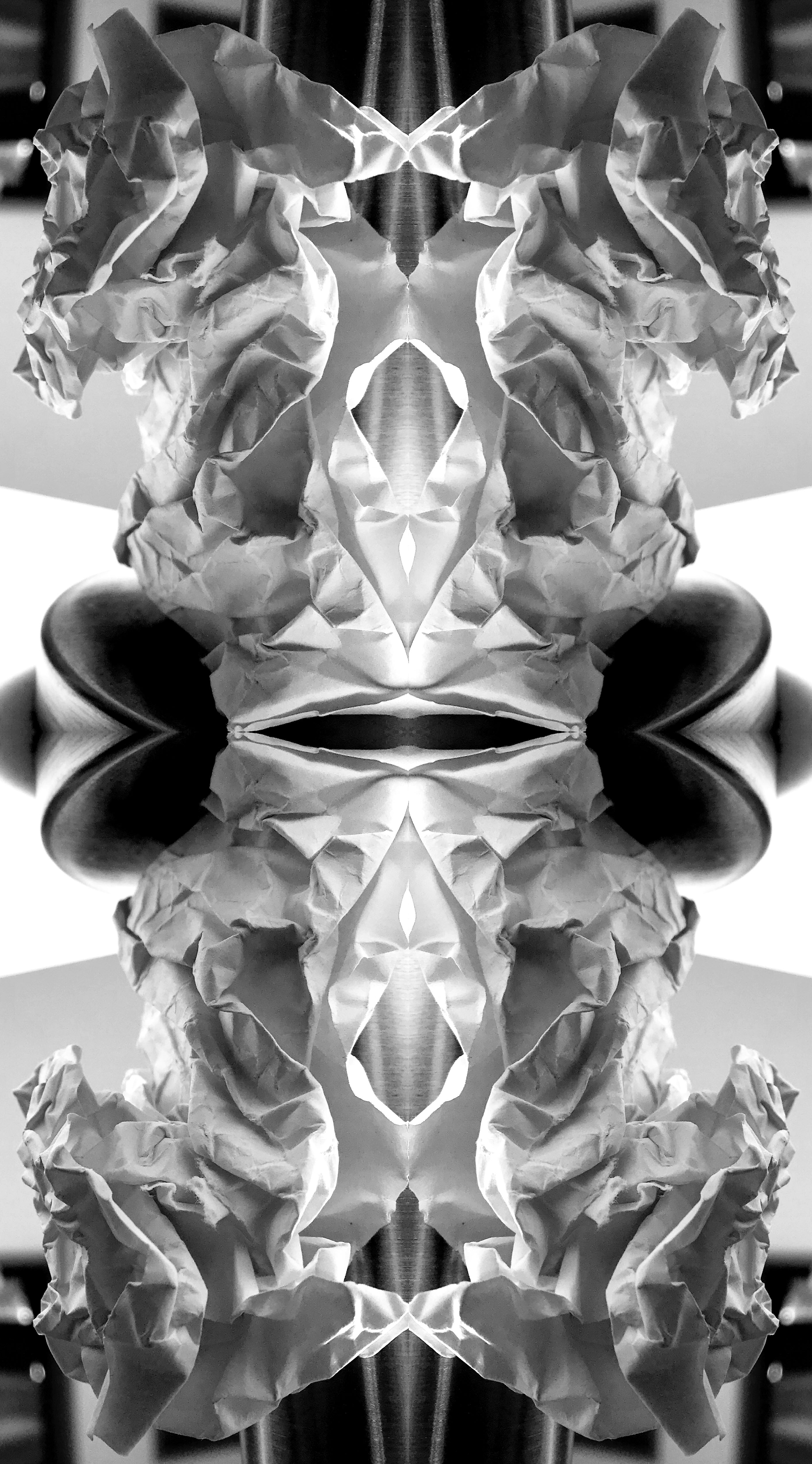
For my next edit I wanted to create a mirror effect. I thought the best way to do this is two duplicate the layer and increase the canvas size. I repeated this four times until I was given the effect. This edit now present the formal element of shape and repetition, which makes it more interesting for viewers to look at.

This next edit I wanted to make the photograph seem more ‘3D’ by adding in a blur. To do this I duplicated the layer and went under fx and changed the blending options. I deselected the green and the blue but left the red. Then I used the arrow keys to move the top layer which presented this effect. I like the way this edit has turned out as it makes the paper seem distorted and is more visually stimulating.
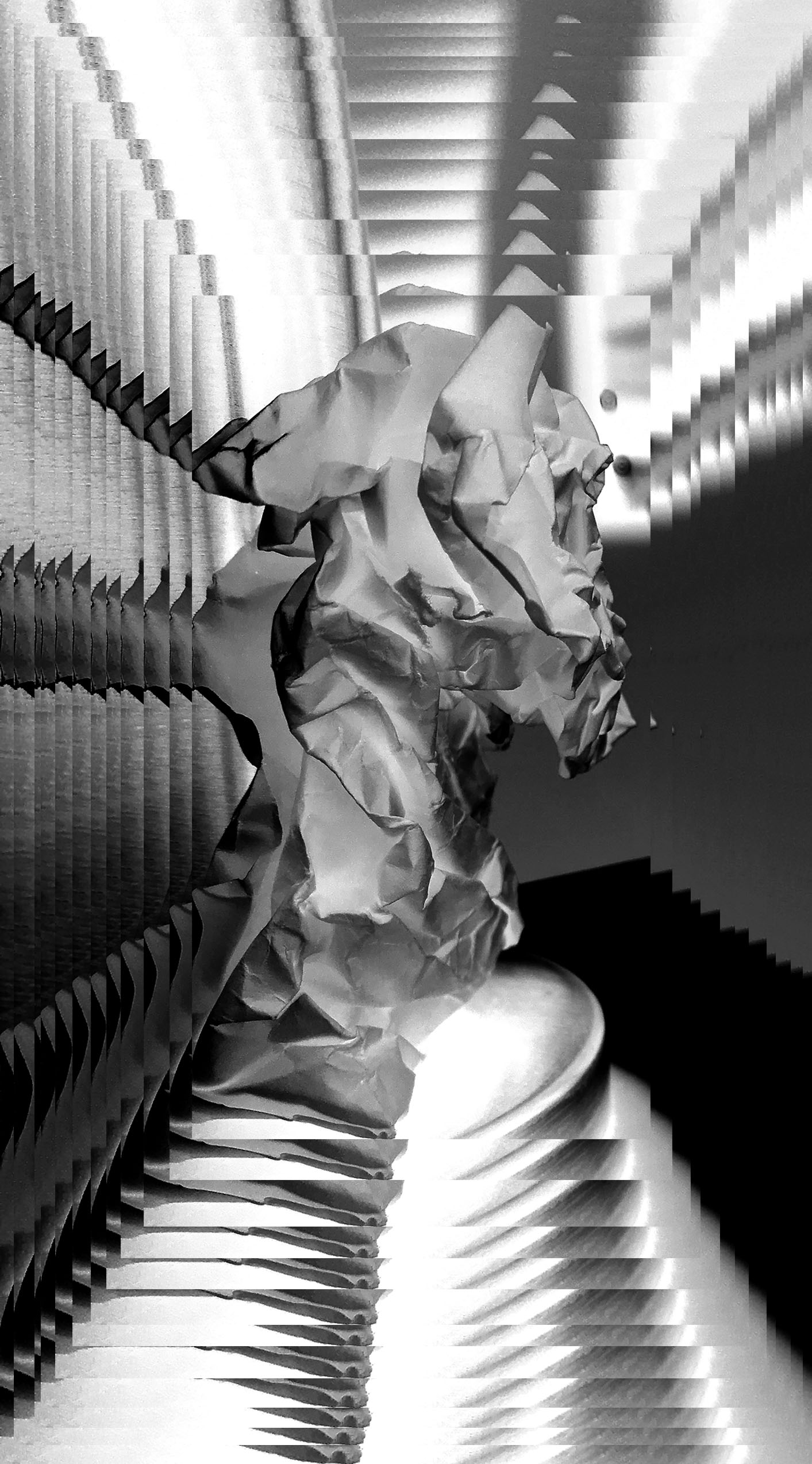
In my final edit I wanted to experiment with layers. I decided to duplicate the image layer and slowly decrease the size of it as I went along. This has made the subject seem further away than it actually is, making it almost seem like an optical illusion. I am really impressed with how this edit turned out as it has made a simplistic photograph seem more interesting.
Favorite Outcome

I really like the way this photograph has turned out. To begin with I have managed to present the formal elements of shape and texture within this photograph. Texture and shape is shown through the folds and creases on the paper. The Macro shot, taken from a straight on angle making it interesting for the viewer to look at. Moreover, I like how an element of 3D is created through the different tones of the paper. Also, to present tonal regions I decided to display this image in black and white. I decided to make the background plain to allow the viewers focus to be solely on the piece of paper located in the center of the frame. Moreover, I attempted to use Creed’s effect of using light to guide the viewers eye around the photograph on my image. I love the simplicity of this edit as it captivates viewers. Finally I believe this edit is my most successful due to the fact it is similar to Creed’s image.
Paper Contact Sheet

Red is for the images I am discarding because I don’t like. Orange is the images I could consider using but may need editing. Green is the images I am definitely using and are the ones I like.
The images with question marks over them are ones that sit on boarder lines to what I am going to do with them.
